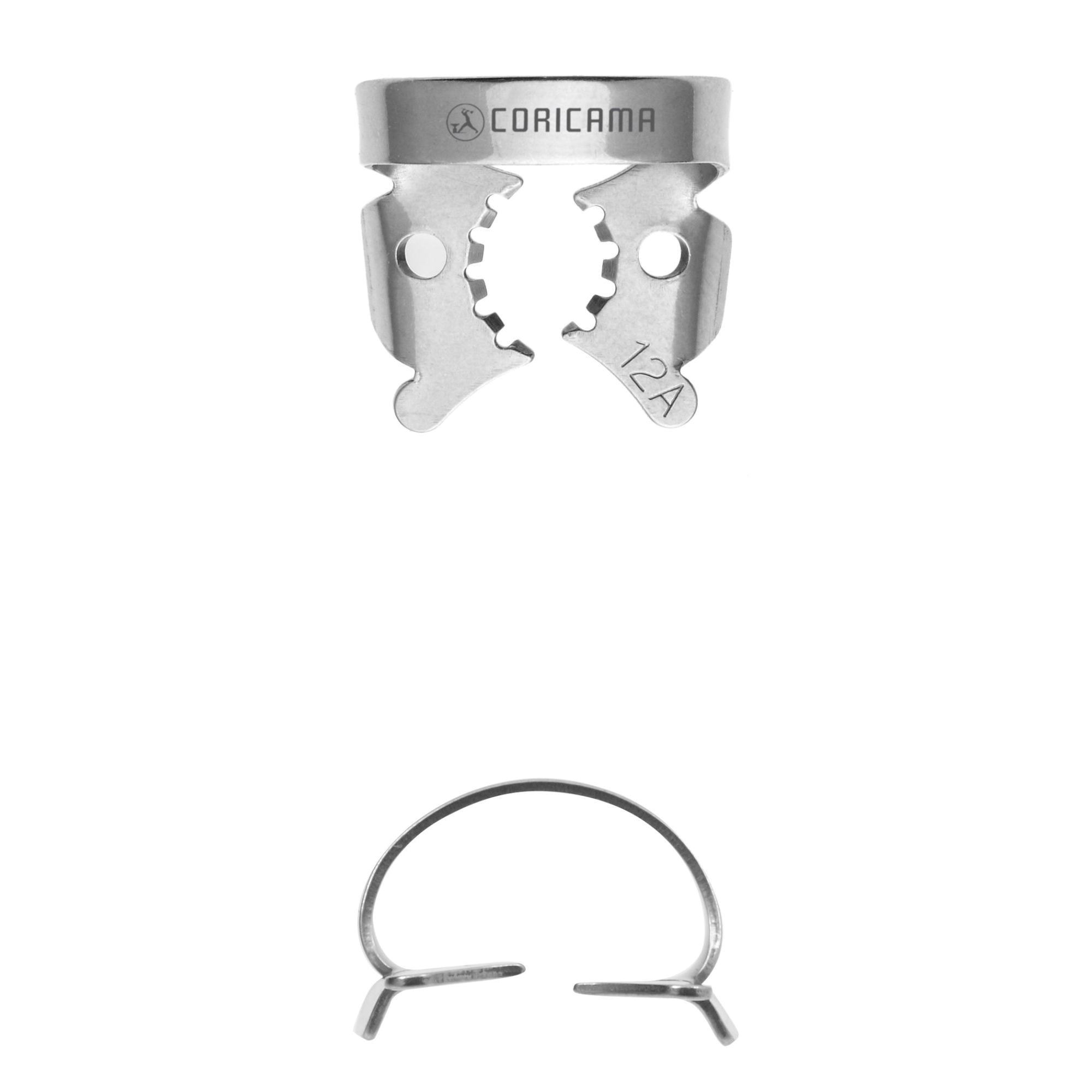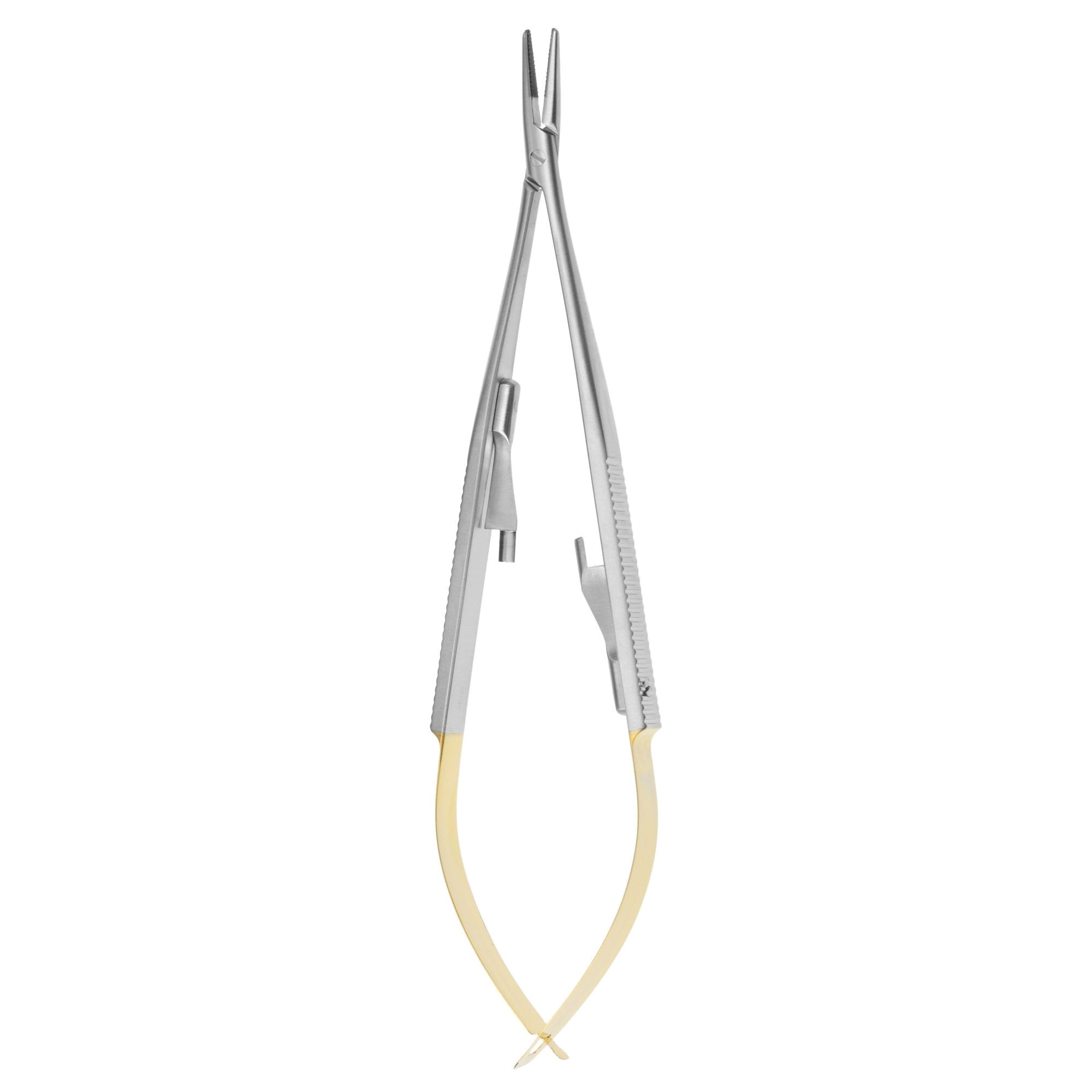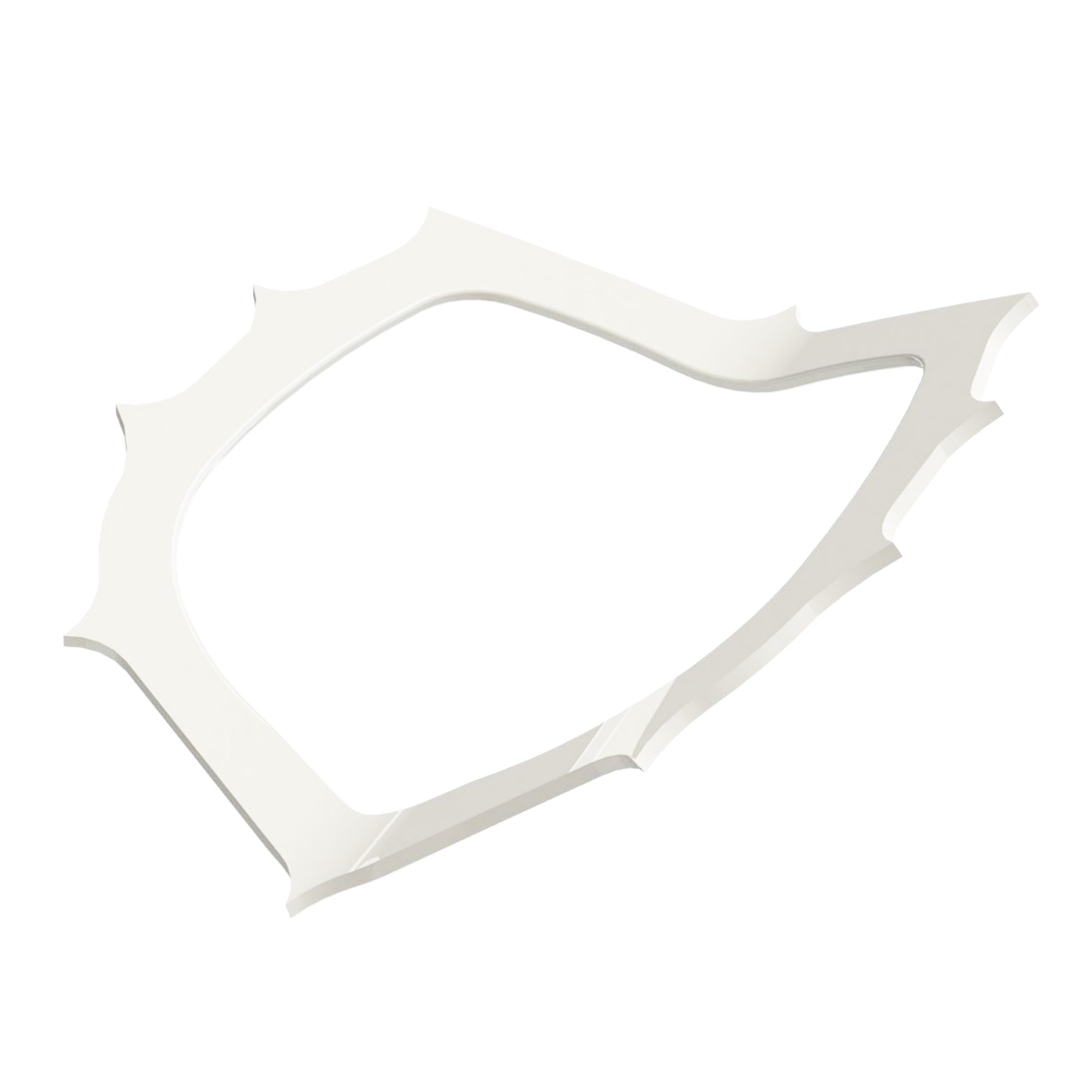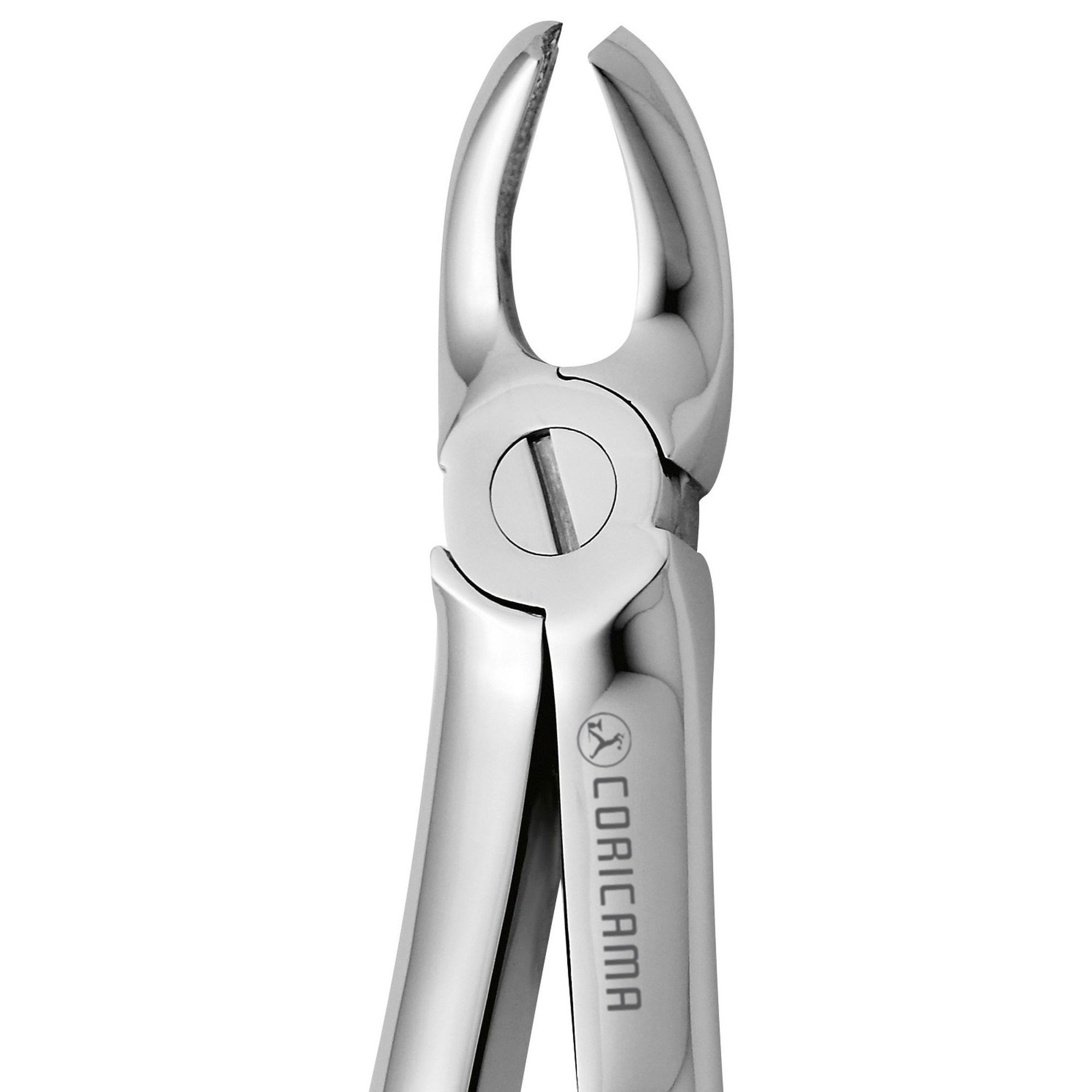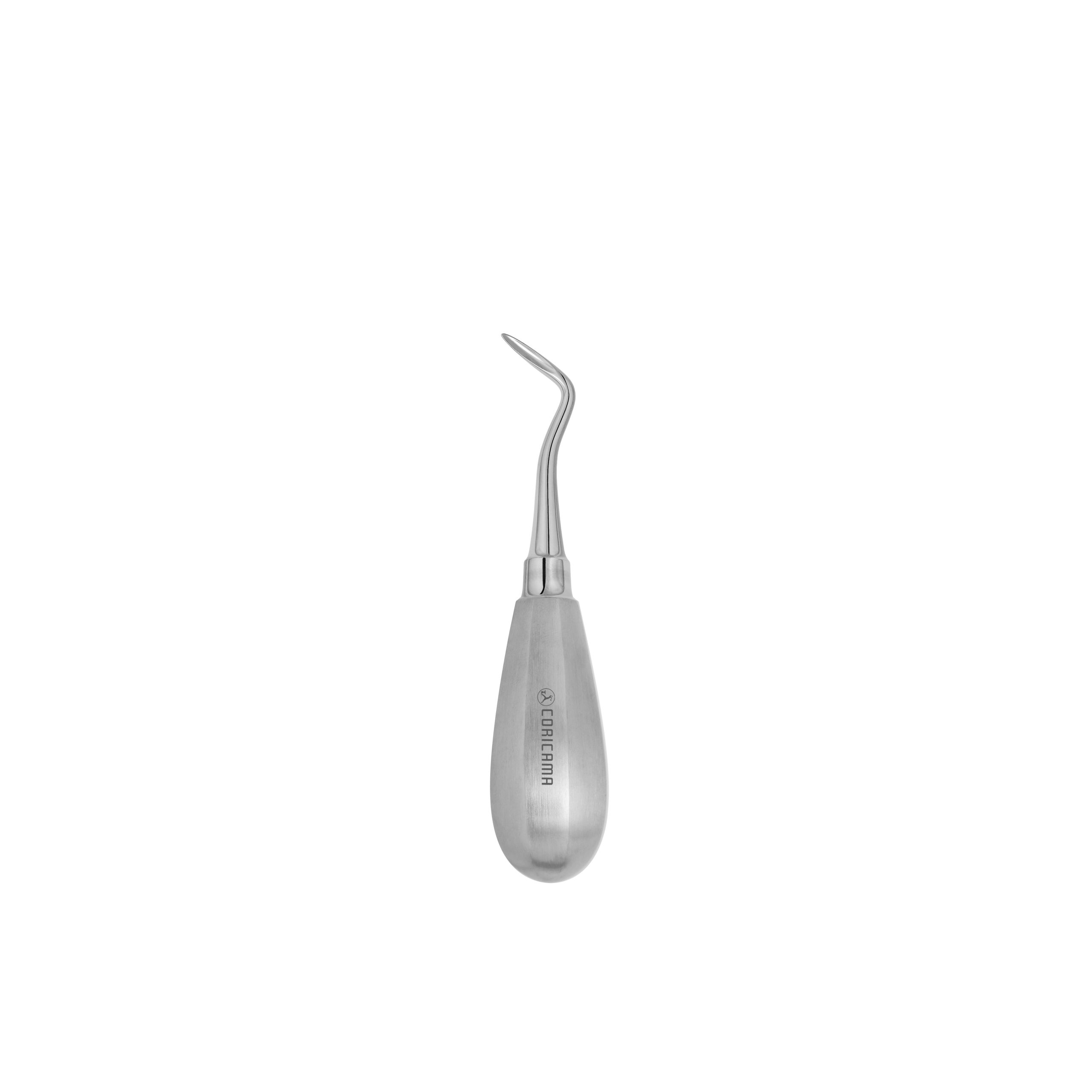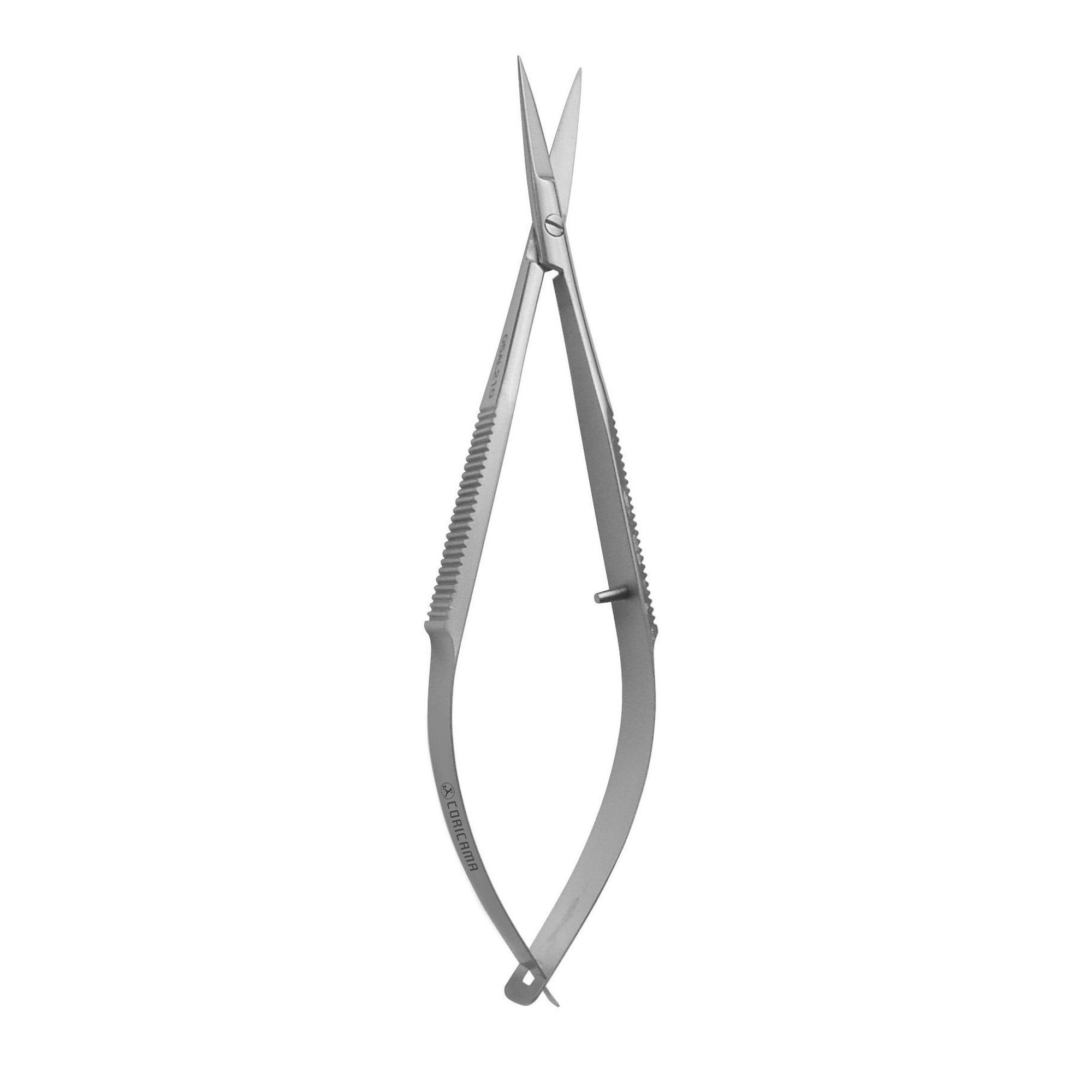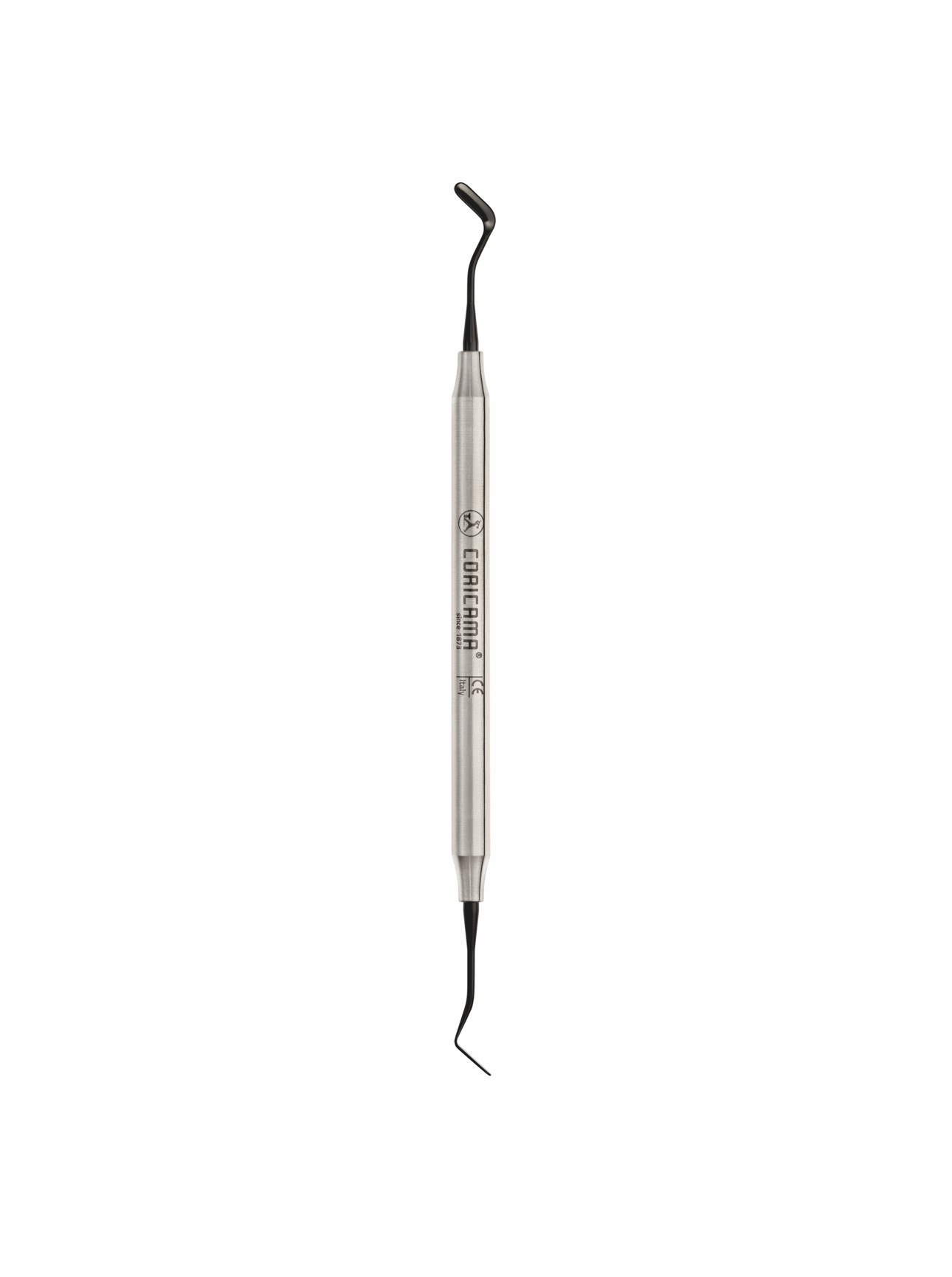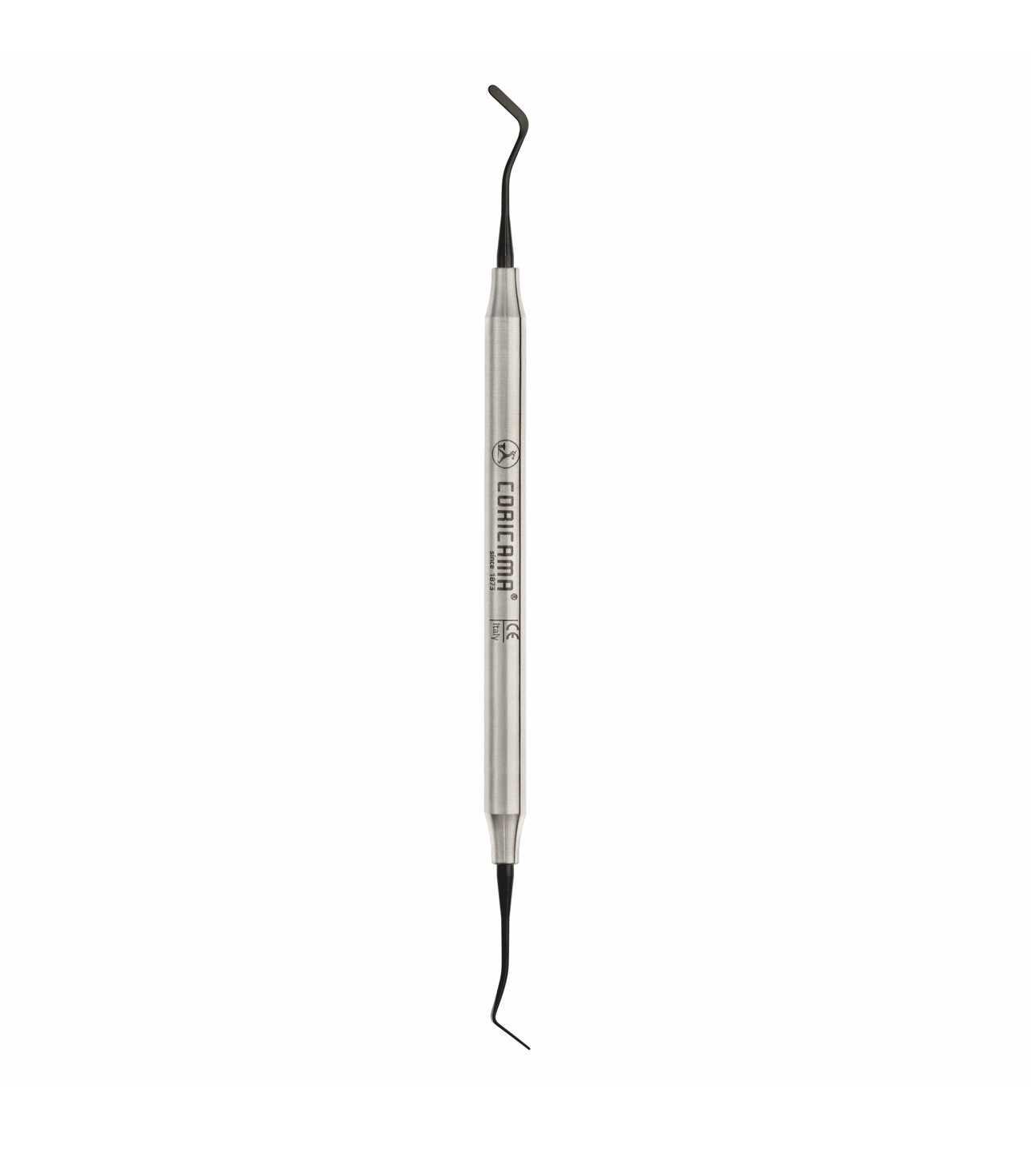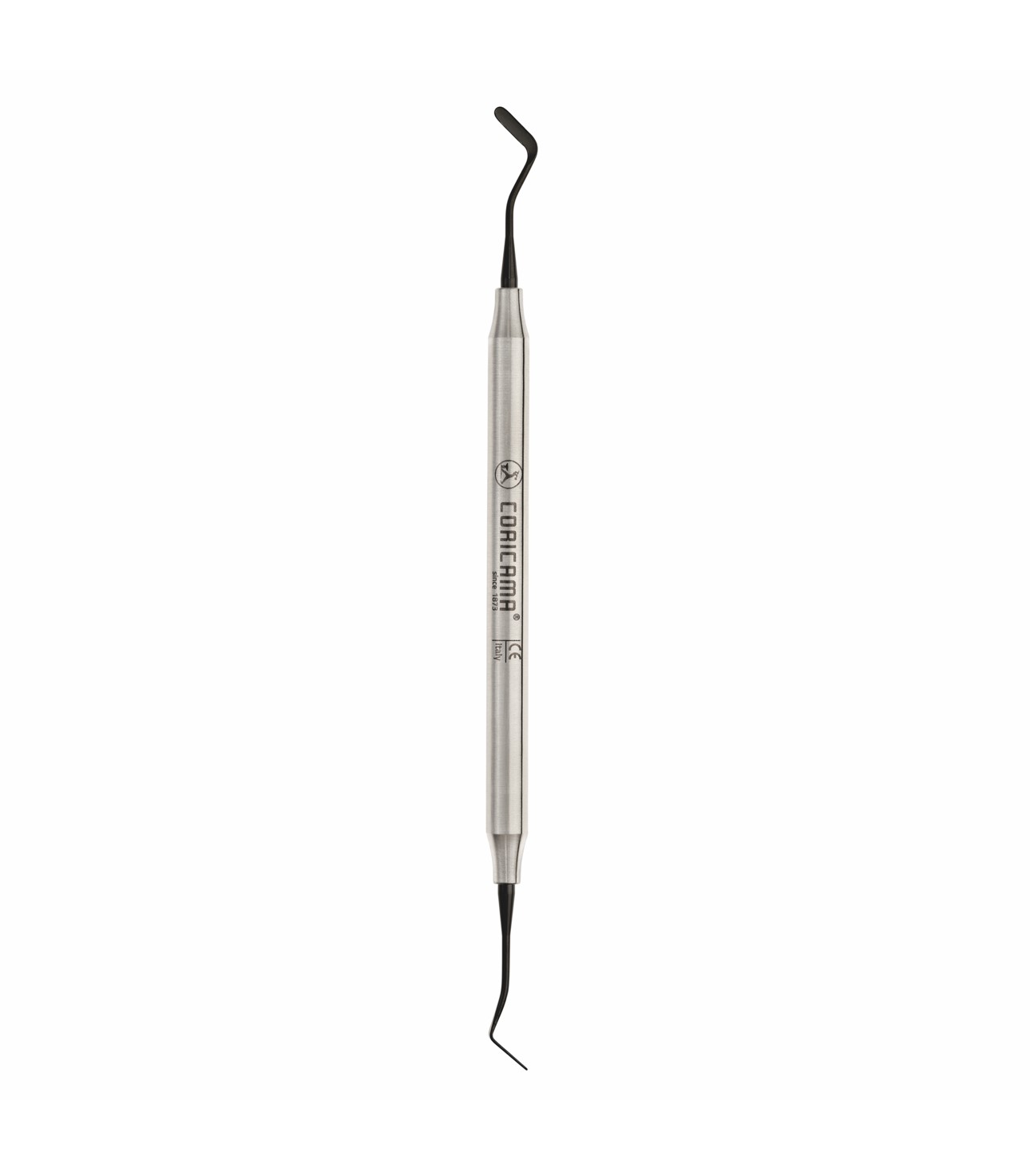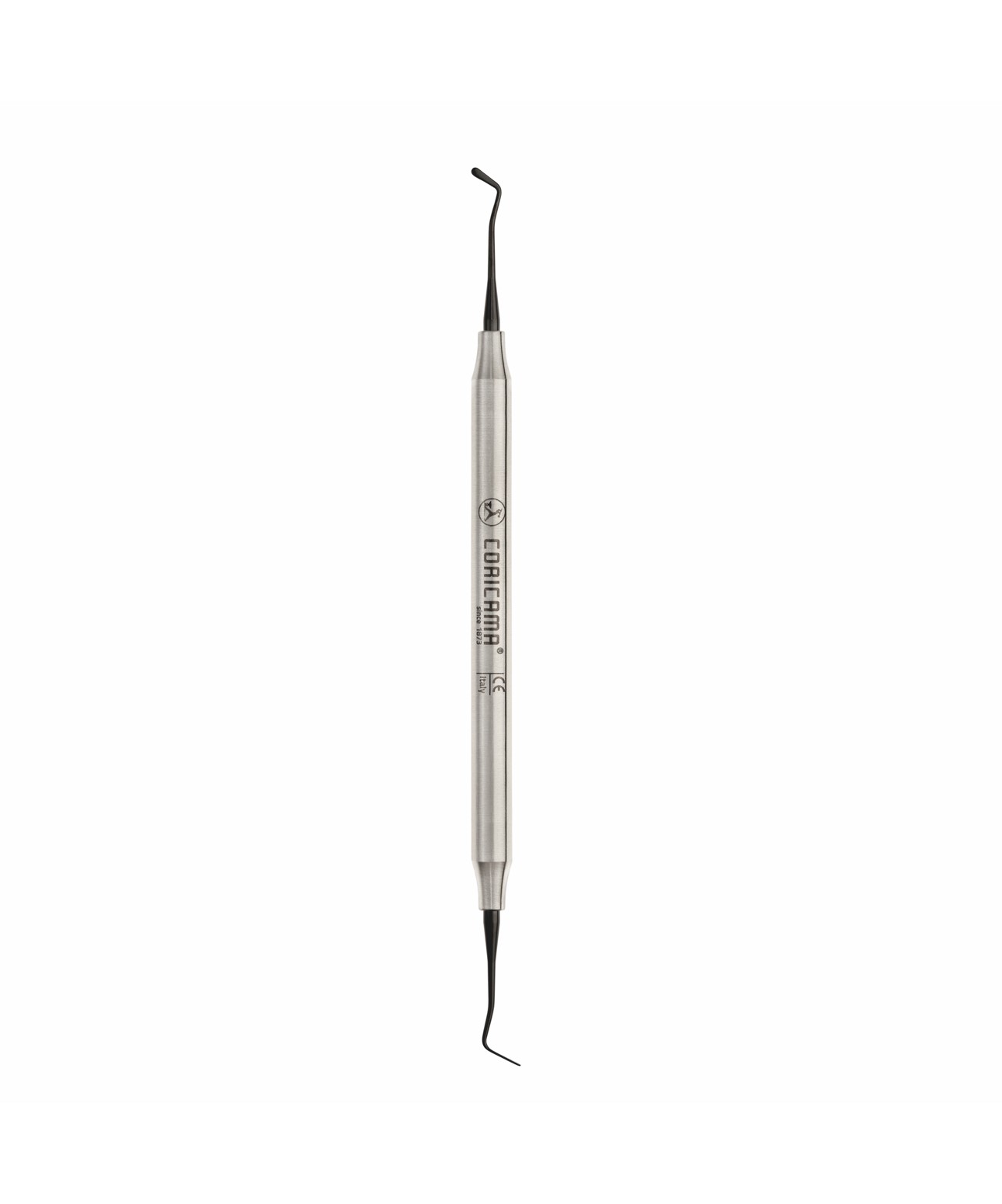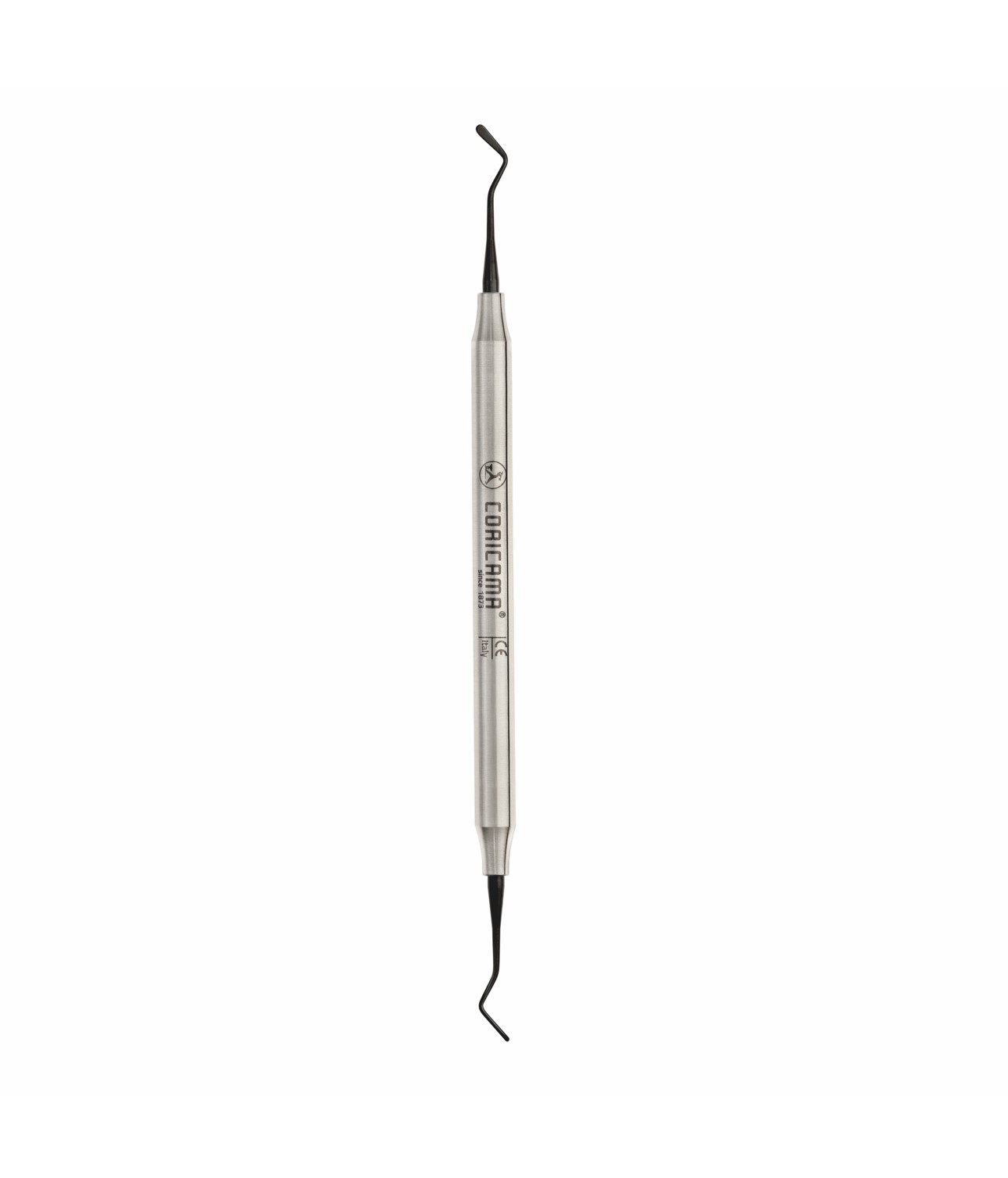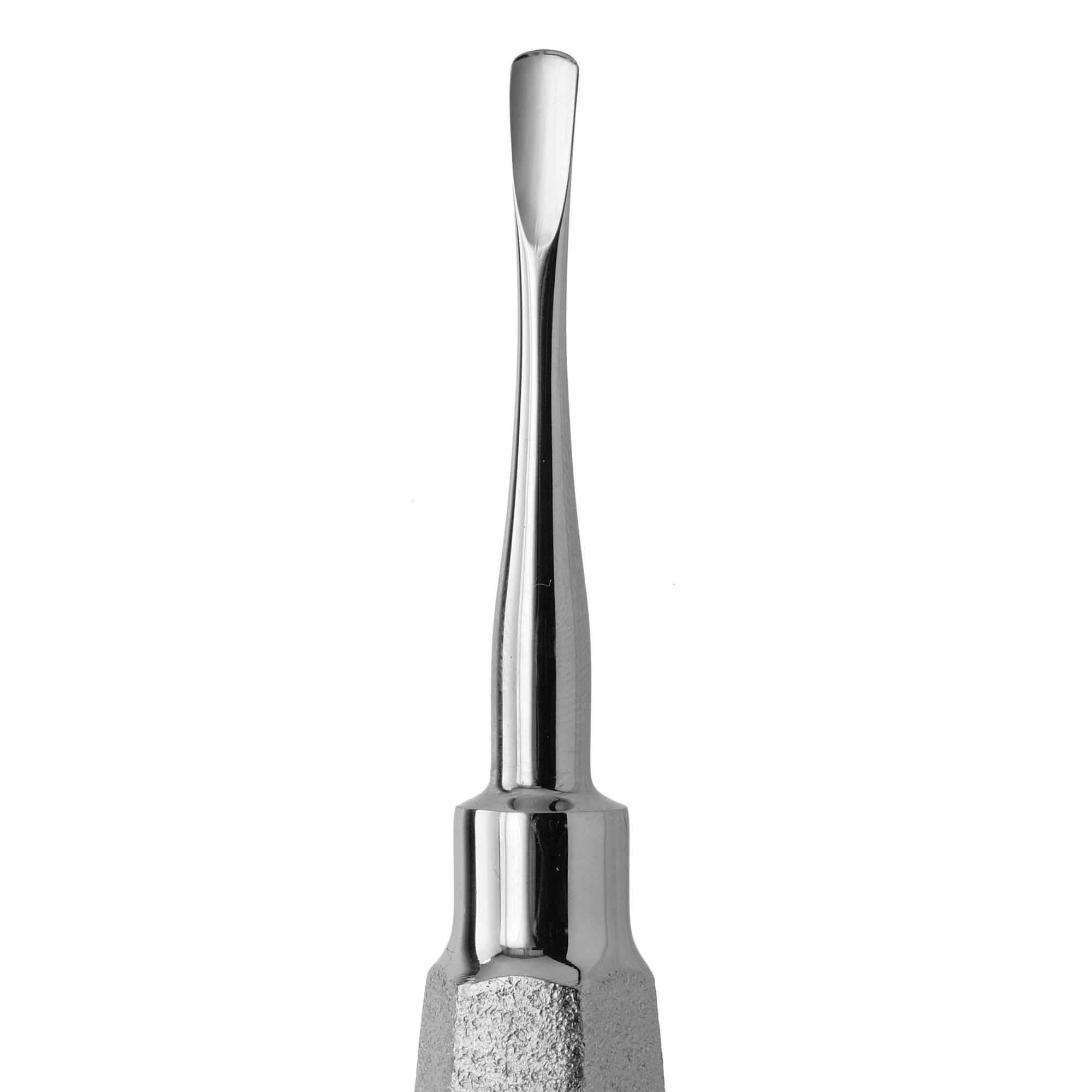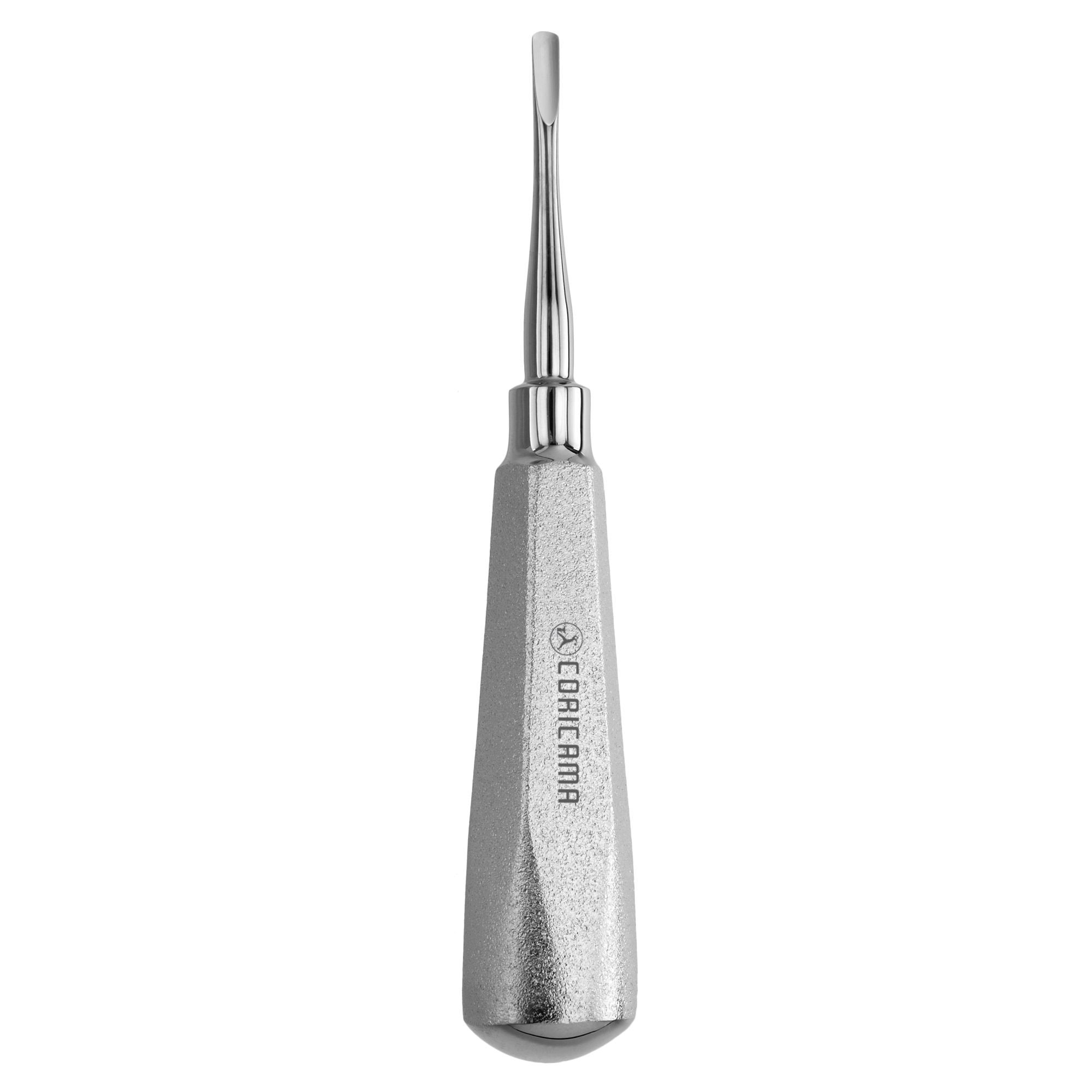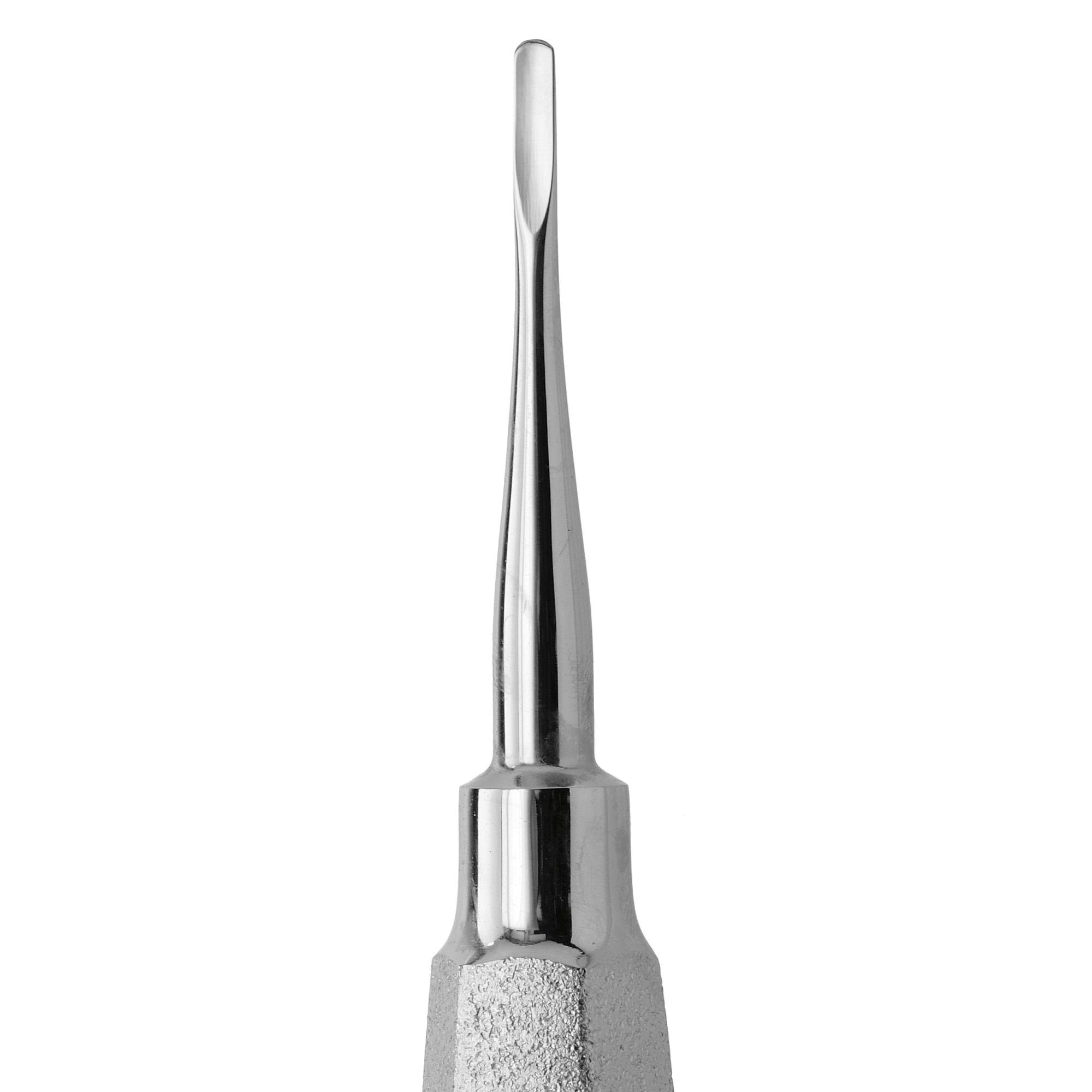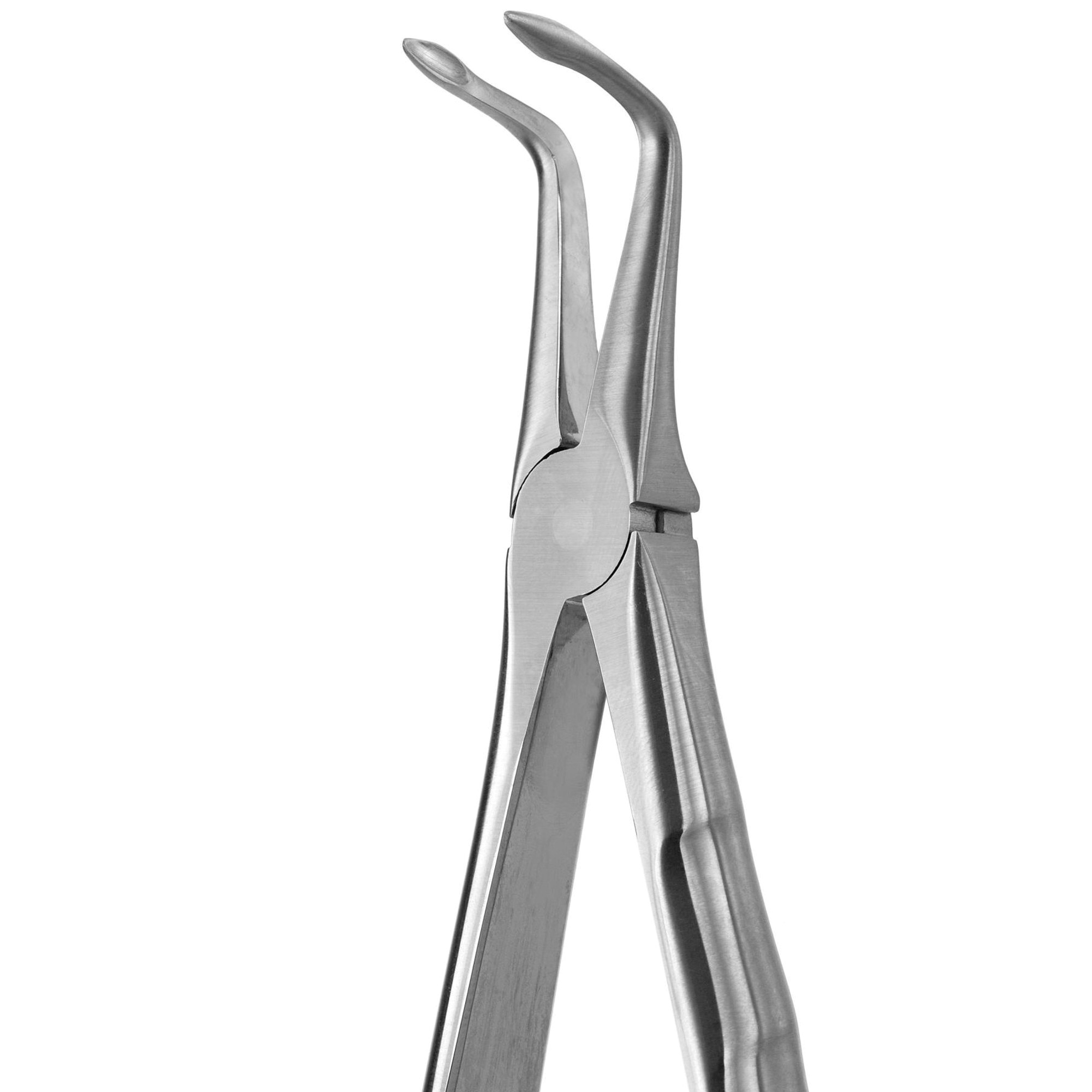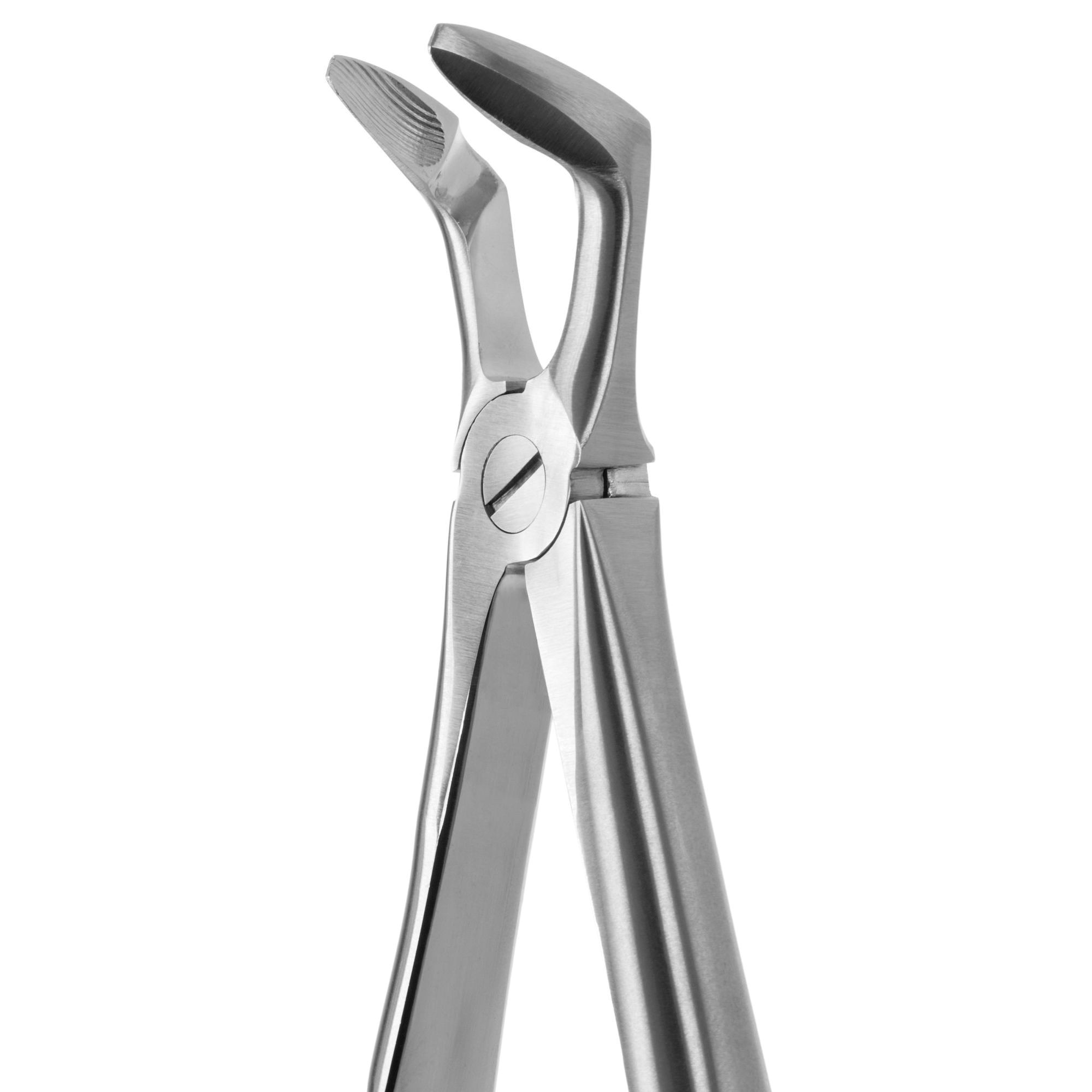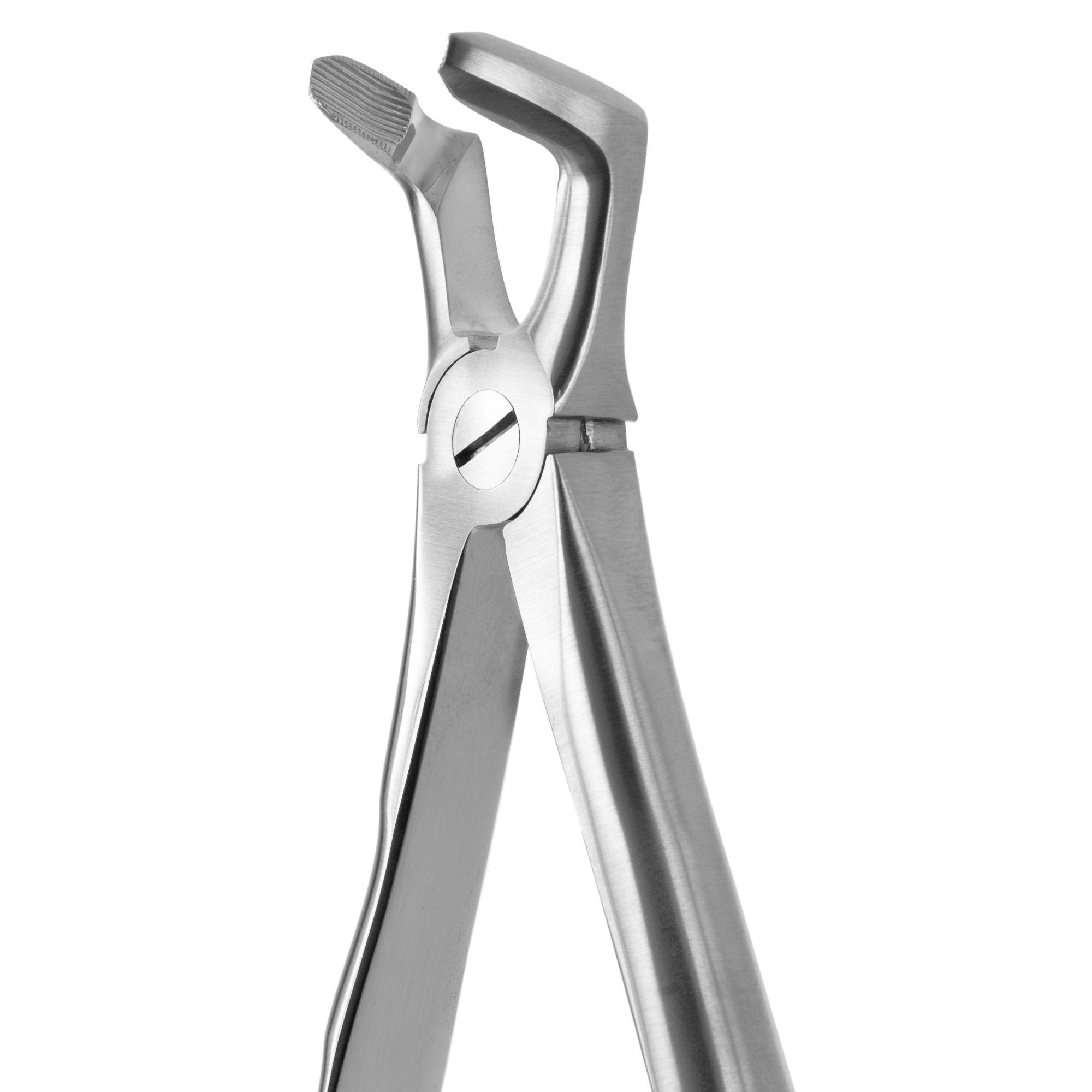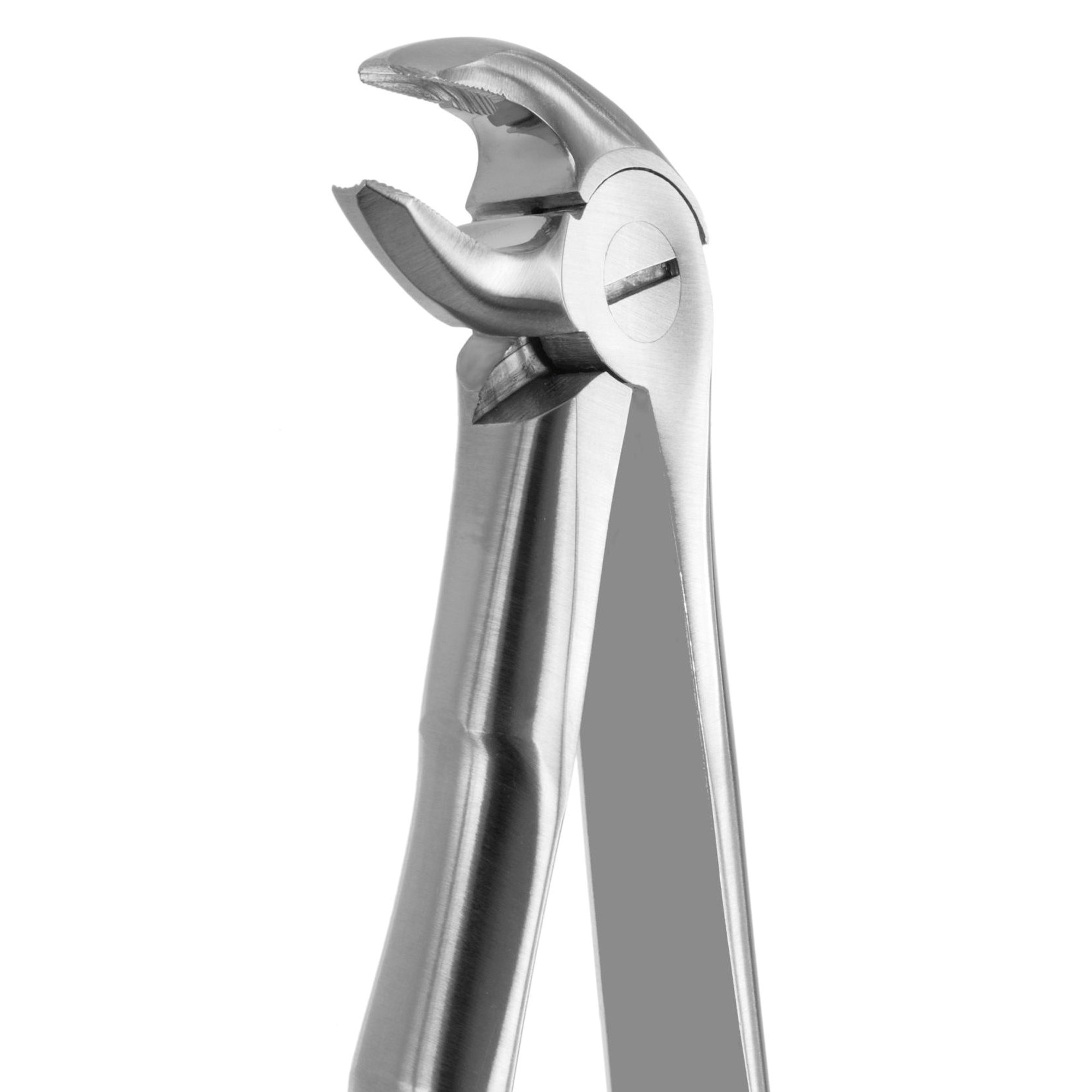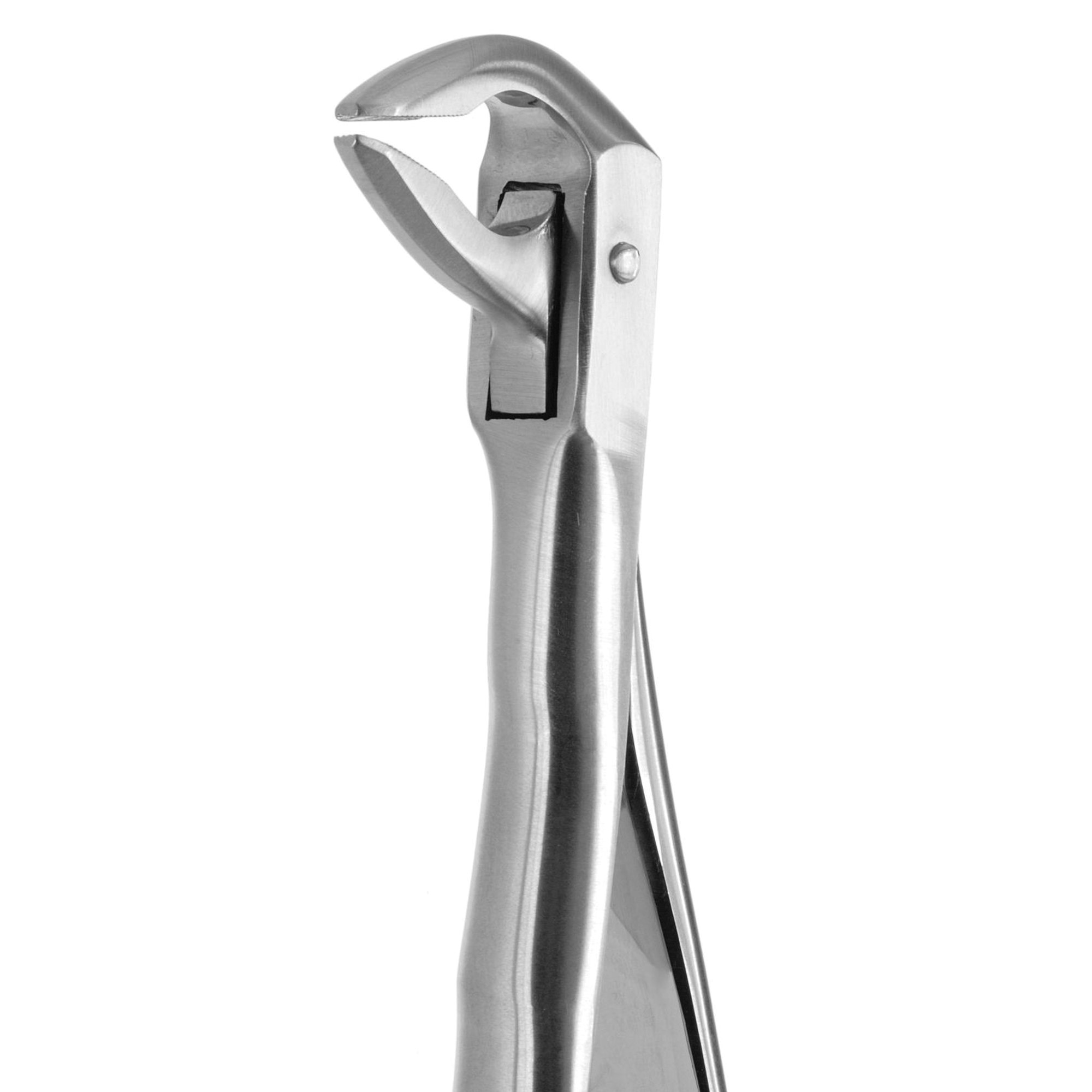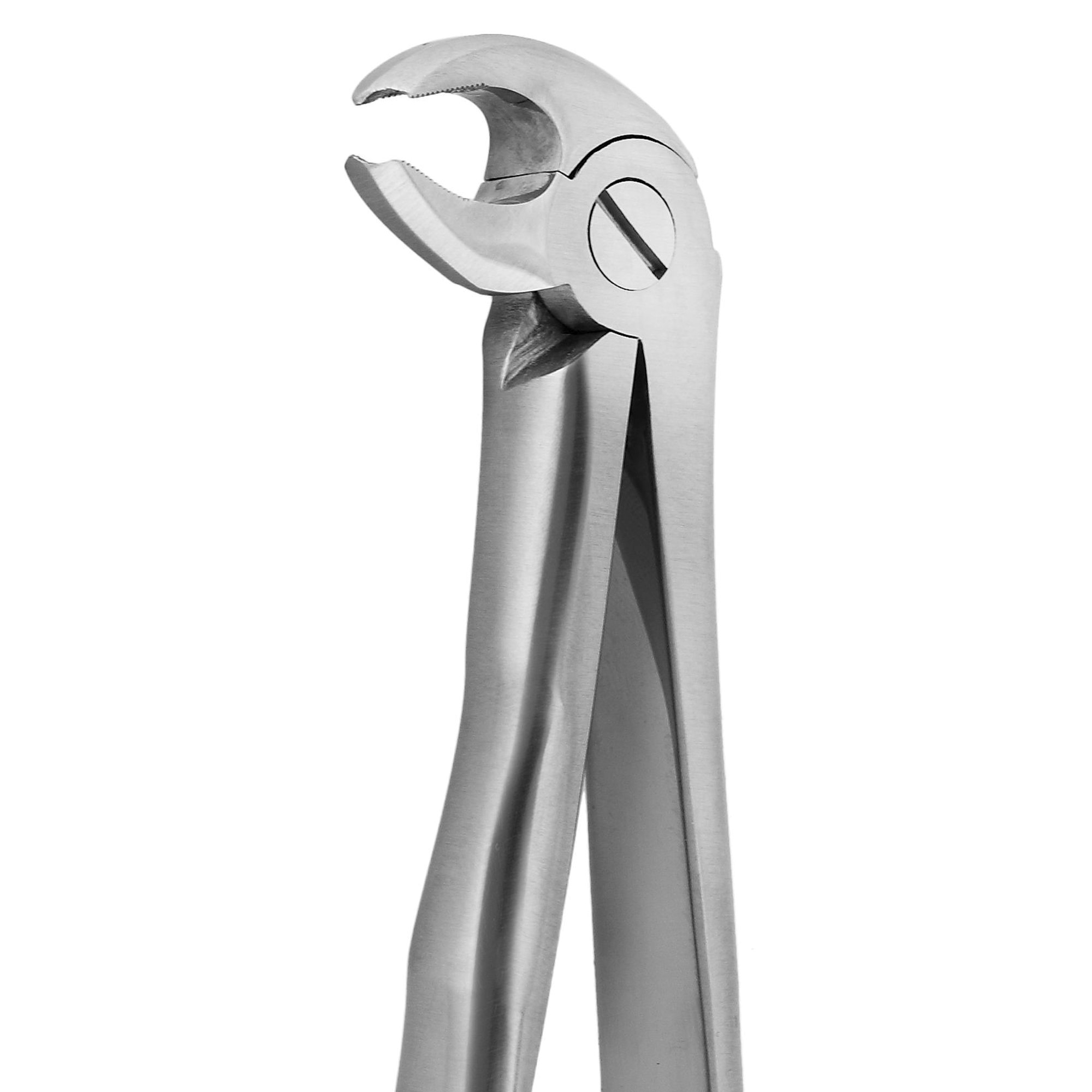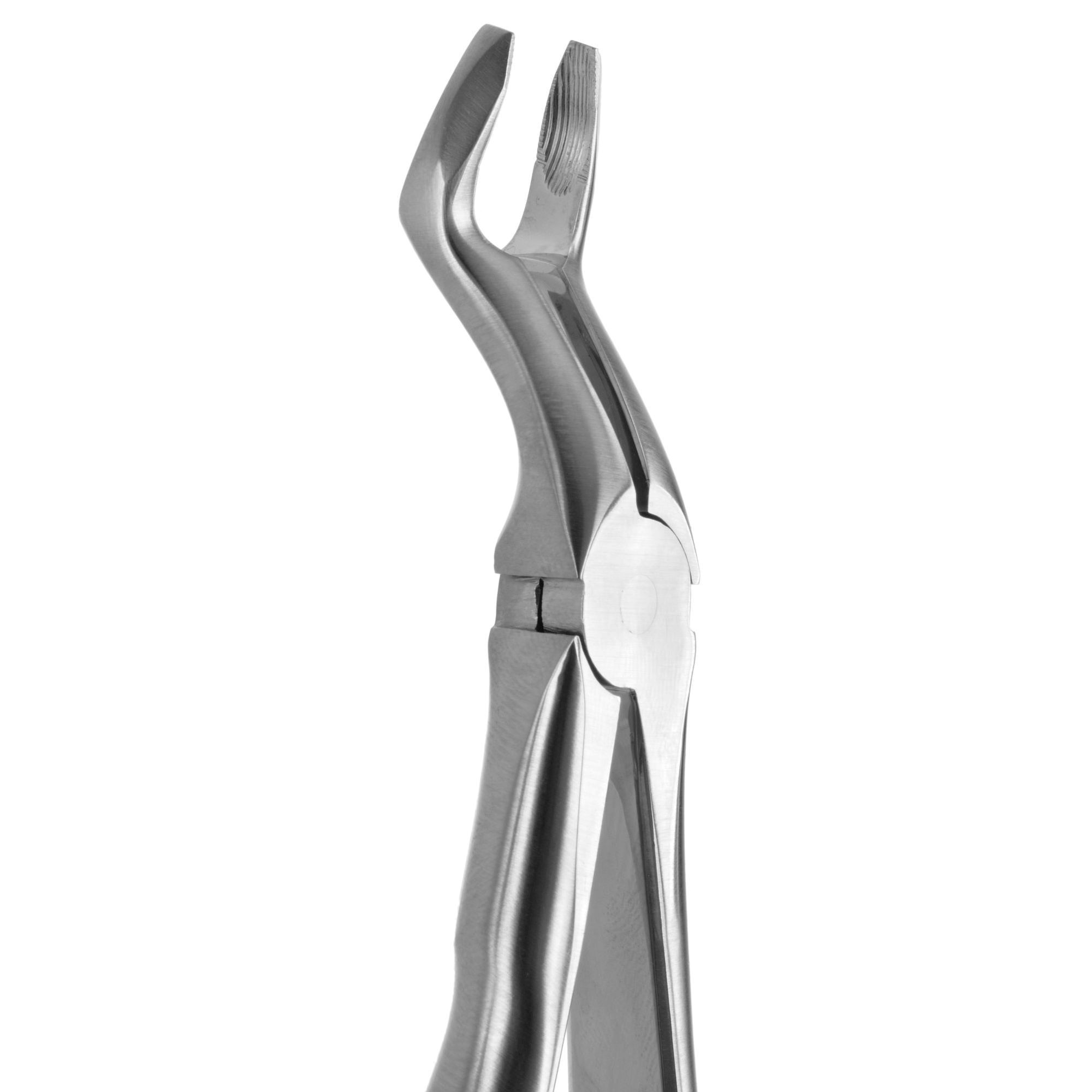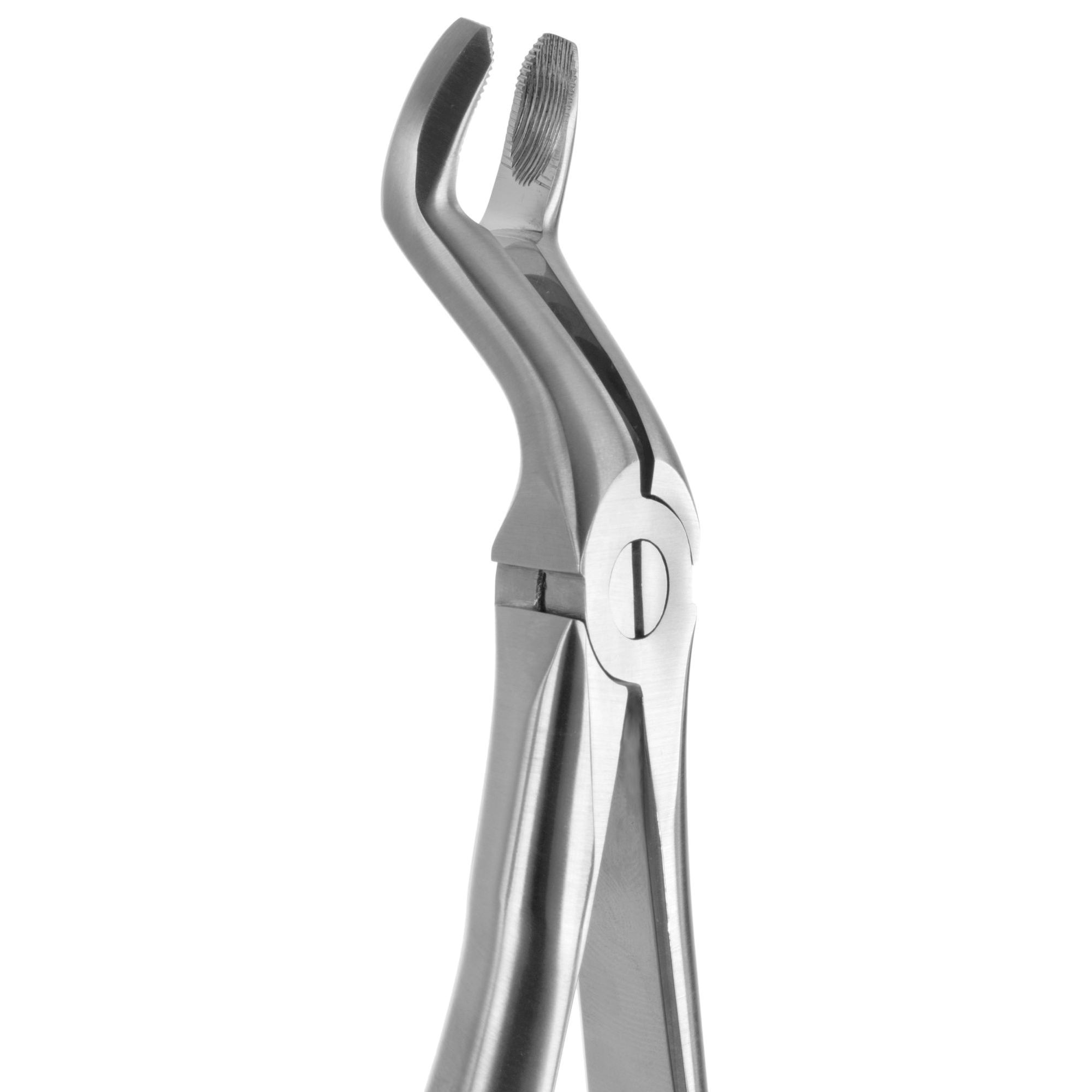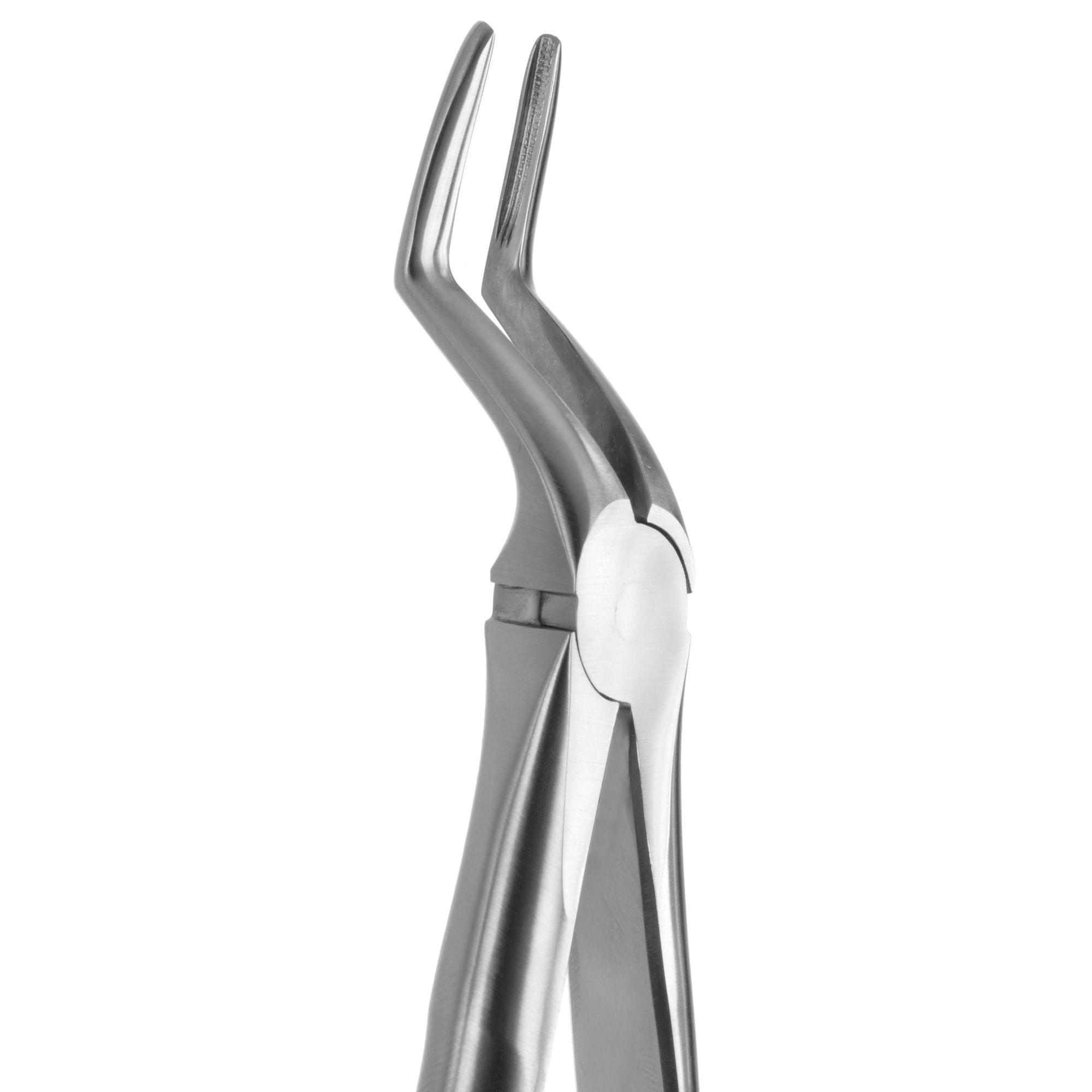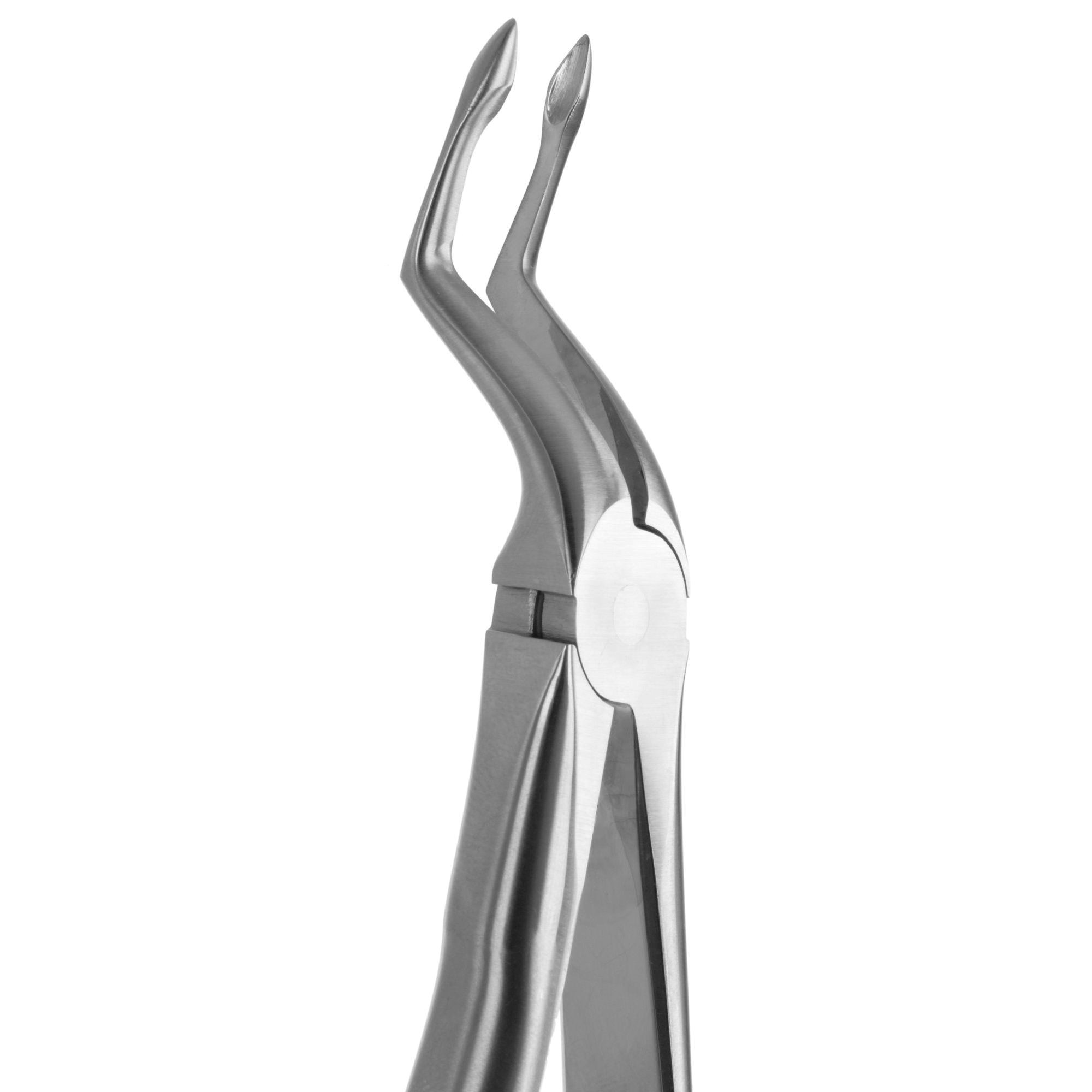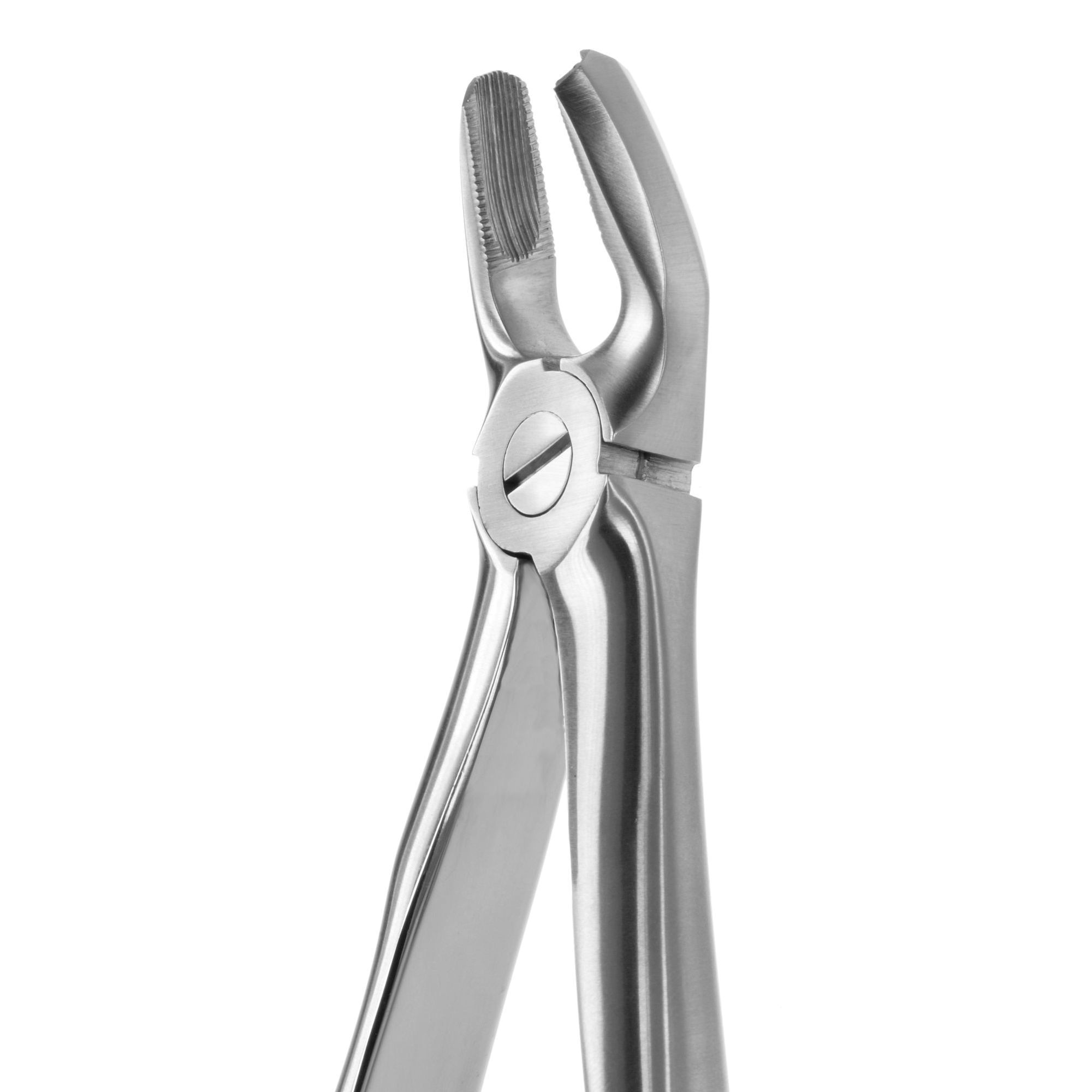Shop by Brands
Top Selling Products
Category: Instruments
-
331570
CORICAMA since 1873…. ITALIAN STYLE and ADVANCED TECHNOLOGY
CORICAMA use only the most suitable steels for the production of surgical instruments to achieve instruments that are both aesthetic and functional.
CORICAMA is a guarantee of high-quality instruments that perfectly fit to the professional sensitivity and contribute to patient well-being. CORICAMA is constantly next to the more demanding dentists and those who seek only the best for their work.
Coricama GRAFITE Diamond in your hands
A refined selection of tools meets the preciousness of diamonds.
A new cross-category product line, but finds its summit in restorative, offering a selection of composite spatulas as precious as jewellery.
Tradition joins technology by coating the steel in DLC – Diamond Like Carbon
This is how GRAFITE by Coricama was born. The new line of onstruments that responds perfectly to todays needs by moulding the dentist’s hand into an instrument for secure and elastic control and outstanding modelling.
- Low coefficient of friction allows the resin to be modelled accurately.
- The working part of the instrument is enhanced by the hardness of the DLC so that the sharpness persists over time.
- The opacity reflects light completely reducing visual fatigue. The black colour provides a contrast that allows precise control of movement.
- Entirely biocompatable and suitable for dental practices, it does not create rejection and does not damage tissues.
- Corrosion resistance, a real barrier to chemical agent.
- No alteration of the instrument, the applied layed of DLC adheres and compacts completely to the underlying surface.
CORICAMA GRAFITE Composite Instrument SS3 #331570
Tip: 2.9mm, 2.9mm
Tip Coating: DLC Diamond Like Graphite
Handle: Mod. SMOOTH 8mm
Handle Material: Stainless Steel
-
331550
CORICAMA since 1873…. ITALIAN STYLE and ADVANCED TECHNOLOGY
CORICAMA use only the most suitable steels for the production of surgical instruments to achieve instruments that are both aesthetic and functional.
CORICAMA is a guarantee of high-quality instruments that perfectly fit to the professional sensitivity and contribute to patient well-being. CORICAMA is constantly next to the more demanding dentists and those who seek only the best for their work.
Coricama GRAFITE Diamond in your hands
A refined selection of tools meets the preciousness of diamonds.
A new cross-category product line, but finds its summit in restorative, offering a selection of composite spatulas as precious as jewellery.
Tradition joins technology by coating the steel in DLC – Diamond Like Carbon
This is how GRAFITE by Coricama was born. The new line of onstruments that responds perfectly to todays needs by moulding the dentist’s hand into an instrument for secure and elastic control and outstanding modelling.
- Low coefficient of friction allows the resin to be modelled accurately.
- The working part of the instrument is enhanced by the hardness of the DLC so that the sharpness persists over time.
- The opacity reflects light completely reducing visual fatigue. The black colour provides a contrast that allows precise control of movement.
- Entirely biocompatable and suitable for dental practices, it does not create rejection and does not damage tissues.
- Corrosion resistance, a real barrier to chemical agent.
- No alteration of the instrument, the applied layed of DLC adheres and compacts completely to the underlying surface.
CORICAMA GRAFITE Composite Instrument SS2 #331560
Tip: 2.0mm, 2.0mm
Tip Coating: DLC Diamond Like Graphite
Handle: Mod. SMOOTH 8mm
Handle Material: Stainless Steel
-
331560
CORICAMA since 1873…. ITALIAN STYLE and ADVANCED TECHNOLOGY
CORICAMA use only the most suitable steels for the production of surgical instruments to achieve instruments that are both aesthetic and functional.
CORICAMA is a guarantee of high-quality instruments that perfectly fit to the professional sensitivity and contribute to patient well-being. CORICAMA is constantly next to the more demanding dentists and those who seek only the best for their work.
Coricama GRAFITE Diamond in your hands
A refined selection of tools meets the preciousness of diamonds.
A new cross-category product line, but finds its summit in restorative, offering a selection of composite spatulas as precious as jewellery.
Tradition joins technology by coating the steel in DLC – Diamond Like Carbon
This is how GRAFITE by Coricama was born. The new line of onstruments that responds perfectly to todays needs by moulding the dentist’s hand into an instrument for secure and elastic control and outstanding modelling.
- Low coefficient of friction allows the resin to be modelled accurately.
- The working part of the instrument is enhanced by the hardness of the DLC so that the sharpness persists over time.
- The opacity reflects light completely reducing visual fatigue. The black colour provides a contrast that allows precise control of movement.
- Entirely biocompatable and suitable for dental practices, it does not create rejection and does not damage tissues.
- Corrosion resistance, a real barrier to chemical agent.
- No alteration of the instrument, the applied layed of DLC adheres and compacts completely to the underlying surface.
CORICAMA GRAFITE Composite Instrument SS2 #331560
Tip: 2.5mm, 2.5mm
Tip Coating: DLC Diamond Like Graphite
Handle: Mod. SMOOTH 8mm
Handle Material: Stainless Steel
-
331540
CORICAMA since 1873…. ITALIAN STYLE and ADVANCED TECHNOLOGY
CORICAMA use only the most suitable steels for the production of surgical instruments to achieve instruments that are both aesthetic and functional.
CORICAMA is a guarantee of high-quality instruments that perfectly fit to the professional sensitivity and contribute to patient well-being. CORICAMA is constantly next to the more demanding dentists and those who seek only the best for their work.
Coricama GRAFITE Diamond in your hands
A refined selection of tools meets the preciousness of diamonds.
A new cross-category product line, but finds its summit in restorative, offering a selection of composite spatulas as precious as jewellery.
Tradition joins technology by coating the steel in DLC – Diamond Like Carbon
This is how GRAFITE by Coricama was born. The new line of onstruments that responds perfectly to todays needs by moulding the dentist’s hand into an instrument for secure and elastic control and outstanding modelling.
- Low coefficient of friction allows the resin to be modelled accurately.
- The working part of the instrument is enhanced by the hardness of the DLC so that the sharpness persists over time.
- The opacity reflects light completely reducing visual fatigue. The black colour provides a contrast that allows precise control of movement.
- Entirely biocompatable and suitable for dental practices, it does not create rejection and does not damage tissues.
- Corrosion resistance, a real barrier to chemical agent.
- No alteration of the instrument, the applied layed of DLC adheres and compacts completely to the underlying surface.
CORICAMA GRAFITE Composite Instrument #12 #331540
Tip: 2.2mm, 2.2mm
Tip Coating: DLC Diamond Like Graphite
Handle: Mod. SMOOTH 8mm
Handle Material: Stainless Steel
-
331530
CORICAMA since 1873…. ITALIAN STYLE and ADVANCED TECHNOLOGY
CORICAMA use only the most suitable steels for the production of surgical instruments to achieve instruments that are both aesthetic and functional.
CORICAMA is a guarantee of high-quality instruments that perfectly fit to the professional sensitivity and contribute to patient well-being. CORICAMA is constantly next to the more demanding dentists and those who seek only the best for their work.
Coricama GRAFITE Diamond in your hands
A refined selection of tools meets the preciousness of diamonds.
A new cross-category product line, but finds its summit in restorative, offering a selection of composite spatulas as precious as jewellery.
Tradition joins technology by coating the steel in DLC – Diamond Like Carbon
This is how GRAFITE by Coricama was born. The new line of onstruments that responds perfectly to todays needs by moulding the dentist’s hand into an instrument for secure and elastic control and outstanding modelling.
- Low coefficient of friction allows the resin to be modelled accurately.
- The working part of the instrument is enhanced by the hardness of the DLC so that the sharpness persists over time.
- The opacity reflects light completely reducing visual fatigue. The black colour provides a contrast that allows precise control of movement.
- Entirely biocompatable and suitable for dental practices, it does not create rejection and does not damage tissues.
- Corrosion resistance, a real barrier to chemical agent.
- No alteration of the instrument, the applied layed of DLC adheres and compacts completely to the underlying surface.
CORICAMA GRAFITE Composite Instrument #11 #331530
Tip: 1.6mm, 1.5mm
Tip Coating: DLC Diamond Like Graphite
Handle: Mod. SMOOTH 8mm
Handle Material: Stainless Steel
-
331520
CORICAMA since 1873…. ITALIAN STYLE and ADVANCED TECHNOLOGY
CORICAMA use only the most suitable steels for the production of surgical instruments to achieve instruments that are both aesthetic and functional.
CORICAMA is a guarantee of high-quality instruments that perfectly fit to the professional sensitivity and contribute to patient well-being. CORICAMA is constantly next to the more demanding dentists and those who seek only the best for their work.
Coricama GRAFITE Diamond in your hands
A refined selection of tools meets the preciousness of diamonds.
A new cross-category product line, but finds its summit in restorative, offering a selection of composite spatulas as precious as jewellery.
Tradition joins technology by coating the steel in DLC – Diamond Like Carbon
This is how GRAFITE by Coricama was born. The new line of onstruments that responds perfectly to todays needs by moulding the dentist’s hand into an instrument for secure and elastic control and outstanding modelling.
- Low coefficient of friction allows the resin to be modelled accurately.
- The working part of the instrument is enhanced by the hardness of the DLC so that the sharpness persists over time.
- The opacity reflects light completely reducing visual fatigue. The black colour provides a contrast that allows precise control of movement.
- Entirely biocompatable and suitable for dental practices, it does not create rejection and does not damage tissues.
- Corrosion resistance, a real barrier to chemical agent.
- No alteration of the instrument, the applied layed of DLC adheres and compacts completely to the underlying surface.
CORICAMA GRAFITE Composite Instrument #10 #331520
Tip: 1.4mm, 1.4mm
Tip Coating: DLC Diamond Like Graphite
Handle: Mod. SMOOTH 8mm
Handle Material: Stainless Steel
-
331510
CORICAMA since 1873…. ITALIAN STYLE and ADVANCED TECHNOLOGY
CORICAMA use only the most suitable steels for the production of surgical instruments to achieve instruments that are both aesthetic and functional.
CORICAMA is a guarantee of high-quality instruments that perfectly fit to the professional sensitivity and contribute to patient well-being. CORICAMA is constantly next to the more demanding dentists and those who seek only the best for their work.
Coricama GRAFITE Diamond in your hands
A refined selection of tools meets the preciousness of diamonds.
A new cross-category product line, but finds its summit in restorative, offering a selection of composite spatulas as precious as jewellery.
Tradition joins technology by coating the steel in DLC – Diamond Like Carbon
This is how GRAFITE by Coricama was born. The new line of onstruments that responds perfectly to todays needs by moulding the dentist’s hand into an instrument for secure and elastic control and outstanding modelling.
- Low coefficient of friction allows the resin to be modelled accurately.
- The working part of the instrument is enhanced by the hardness of the DLC so that the sharpness persists over time.
- The opacity reflects light completely reducing visual fatigue. The black colour provides a contrast that allows precise control of movement.
- Entirely biocompatable and suitable for dental practices, it does not create rejection and does not damage tissues.
- Corrosion resistance, a real barrier to chemical agent.
- No alteration of the instrument, the applied layed of DLC adheres and compacts completely to the underlying surface.
CORICAMA GRAFITE Composite Instrument PFI 1A #331510
Tip: 1.7mm, 0.9mm
Tip Coating: DLC Diamond Like Graphite
Handle: Mod. SMOOTH 8mm
Handle Material: Stainless Steel
-
662360
CORICAMA since 1873…. ITALIAN STYLE and ADVANCED TECHNOLOGY
CORICAMA use only the most suitable steels for the production of surgical instruments to achieve instruments that are both aesthetic and functional.
CORICAMA is a guarantee of high-quality instruments that perfectly fit to the professional sensitivity and contribute to patient well-being. CORICAMA is constantly next to the more demanding dentists and those who seek only the best for their work.
CORICAMA ROOT ELEVATOR LUSSATORE CURVED 5mm #662360
Used as a lever for the extraction of a tooth or retained roots. It is pushed in between the gums and the external part of the tooth and used to loosen the tissue surrounding the tooth.
The blade transmits a force, generated by rotating the handle along its long axis, to the surface of the tooth or root. This produces the displacement of the tooth away from the point of application where the elevator comes into contact with the tooth. The force may be applied perpendicularly to the tooth, with the elevator placed in the interdental space, or along its long axis. Since considerable force is applied to the tooth, it’s necessary to prevent the elevator from slipping. During its use, the operators index finger should therefore be extended over the length of the blade to act as a support on adjacent hard tissues.
The curved blade of the elevator is placed on the root surface, thus lying between the tooth and the alveolar bone which acts as a fulcrum around which the elevator is turned. The rotation of the elevator will produce a force which dislocates the tooth and tends to displace it out of its socket. An equal force will also be applied to the fulcrum, so it is important to ensure that this alveolar bone is capable of resisting such a force and that is not an adjacent tooth which may, as a result, become inadvertently loosened or displaced.
Elevators must be used with caution when extracting teeth to avoid generating excessive and potentially damaging forces.
Sharp and thin blades, allow a gentle penetration cutting the periodontal ligaments.
Thanks to its form with the Lussatore root elevators the widening of the alveole becomes easy, reducing the use of tooth forcep.
Luxators are sharp, fine, slightly flexible single-bladed used to incise the soft tissue attachment of a tooth while sliding the periodontal space to an apical position. Their subsequent rotation then luxates and promotes the displacement of the tooth, with a minimum of force and alveolar destruction.
Instrument Name: Luxator 5mm Curved
Tip: Curved 5mm
Tip Material: Stainless Steel
Handle Material: Stainless Steel
-
662350
CORICAMA since 1873…. ITALIAN STYLE and ADVANCED TECHNOLOGY
CORICAMA use only the most suitable steels for the production of surgical instruments to achieve instruments that are both aesthetic and functional.
CORICAMA is a guarantee of high-quality instruments that perfectly fit to the professional sensitivity and contribute to patient well-being. CORICAMA is constantly next to the more demanding dentists and those who seek only the best for their work.
CORICAMA ROOT ELEVATOR LUSSATORE STRAIGHT 5mm #662350
Used as a lever for the extraction of a tooth or retained roots. It is pushed in between the gums and the external part of the tooth and used to loosen the tissue surrounding the tooth.
The blade transmits a force, generated by rotating the handle along its long axis, to the surface of the tooth or root. This produces the displacement of the tooth away from the point of application where the elevator comes into contact with the tooth. The force may be applied perpendicularly to the tooth, with the elevator placed in the interdental space, or along its long axis. Since considerable force is applied to the tooth, it’s necessary to prevent the elevator from slipping. During its use, the operators index finger should therefore be extended over the length of the blade to act as a support on adjacent hard tissues.
The curved blade of the elevator is placed on the root surface, thus lying between the tooth and the alveolar bone which acts as a fulcrum around which the elevator is turned. The rotation of the elevator will produce a force which dislocates the tooth and tends to displace it out of its socket. An equal force will also be applied to the fulcrum, so it is important to ensure that this alveolar bone is capable of resisting such a force and that is not an adjacent tooth which may, as a result, become inadvertently loosened or displaced.
Elevators must be used with caution when extracting teeth to avoid generating excessive and potentially damaging forces.
Sharp and thin blades, allow a gentle penetration cutting the periodontal ligaments.
Thanks to its form with the Lussatore root elevators the widening of the alveole becomes easy, reducing the use of tooth forcep.
Luxators are sharp, fine, slightly flexible single-bladed used to incise the soft tissue attachment of a tooth while sliding the periodontal space to an apical position. Their subsequent rotation then luxates and promotes the displacement of the tooth, with a minimum of force and alveolar destruction.
Instrument Name: Luxatore 5mm Straight
Tip: Straight 5mm
Tip Material: Stainless Steel
Handle Material: Stainless Steel
-
662340
CORICAMA since 1873…. ITALIAN STYLE and ADVANCED TECHNOLOGY
CORICAMA use only the most suitable steels for the production of surgical instruments to achieve instruments that are both aesthetic and functional.
CORICAMA is a guarantee of high-quality instruments that perfectly fit to the professional sensitivity and contribute to patient well-being. CORICAMA is constantly next to the more demanding dentists and those who seek only the best for their work.
CORICAMA ROOT ELEVATOR LUSSATORE CURVED 4mm #662340
Used as a lever for the extraction of a tooth or retained roots. It is pushed in between the gums and the external part of the tooth and used to loosen the tissue surrounding the tooth.
The blade transmits a force, generated by rotating the handle along its long axis, to the surface of the tooth or root. This produces the displacement of the tooth away from the point of application where the elevator comes into contact with the tooth. The force may be applied perpendicularly to the tooth, with the elevator placed in the interdental space, or along its long axis. Since considerable force is applied to the tooth, it’s necessary to prevent the elevator from slipping. During its use, the operators index finger should therefore be extended over the length of the blade to act as a support on adjacent hard tissues.
The curved blade of the elevator is placed on the root surface, thus lying between the tooth and the alveolar bone which acts as a fulcrum around which the elevator is turned. The rotation of the elevator will produce a force which dislocates the tooth and tends to displace it out of its socket. An equal force will also be applied to the fulcrum, so it is important to ensure that this alveolar bone is capable of resisting such a force and that is not an adjacent tooth which may, as a result, become inadvertently loosened or displaced.
Elevators must be used with caution when extracting teeth to avoid generating excessive and potentially damaging forces.
Sharp and thin blades, allow a gentle penetration cutting the periodontal ligaments.
Thanks to its form with the Lussatore root elevators the widening of the alveole becomes easy, reducing the use of tooth forcep.
Luxators are sharp, fine, slightly flexible single-bladed used to incise the soft tissue attachment of a tooth while sliding the periodontal space to an apical position. Their subsequent rotation then luxates and promotes the displacement of the tooth, with a minimum of force and alveolar destruction.
Instrument Name: Luxator 4mm Curved
Tip: Curved 4mm
Tip Material: Stainless Steel
Handle Material: Stainless Steel
-
662330
CORICAMA since 1873…. ITALIAN STYLE and ADVANCED TECHNOLOGY
CORICAMA use only the most suitable steels for the production of surgical instruments to achieve instruments that are both aesthetic and functional.
CORICAMA is a guarantee of high-quality instruments that perfectly fit to the professional sensitivity and contribute to patient well-being. CORICAMA is constantly next to the more demanding dentists and those who seek only the best for their work.
CORICAMA ROOT ELEVATOR LUSSATORE STRAIGHT 4mm #662330
Used as a lever for the extraction of a tooth or retained roots. It is pushed in between the gums and the external part of the tooth and used to loosen the tissue surrounding the tooth.
The blade transmits a force, generated by rotating the handle along its long axis, to the surface of the tooth or root. This produces the displacement of the tooth away from the point of application where the elevator comes into contact with the tooth. The force may be applied perpendicularly to the tooth, with the elevator placed in the interdental space, or along its long axis. Since considerable force is applied to the tooth, it’s necessary to prevent the elevator from slipping. During its use, the operators index finger should therefore be extended over the length of the blade to act as a support on adjacent hard tissues.
The curved blade of the elevator is placed on the root surface, thus lying between the tooth and the alveolar bone which acts as a fulcrum around which the elevator is turned. The rotation of the elevator will produce a force which dislocates the tooth and tends to displace it out of its socket. An equal force will also be applied to the fulcrum, so it is important to ensure that this alveolar bone is capable of resisting such a force and that is not an adjacent tooth which may, as a result, become inadvertently loosened or displaced.
Elevators must be used with caution when extracting teeth to avoid generating excessive and potentially damaging forces.
Sharp and thin blades, allow a gentle penetration cutting the periodontal ligaments.
Thanks to its form with the Lussatore root elevators the widening of the alveole becomes easy, reducing the use of tooth forcep.
Luxators are sharp, fine, slightly flexible single-bladed used to incise the soft tissue attachment of a tooth while sliding the periodontal space to an apical position. Their subsequent rotation then luxates and promotes the displacement of the tooth, with a minimum of force and alveolar destruction.
Instrument Name: Luxator 4mm Straight
Tip: Straight 4mm
Tip Material: Stainless Steel
Handle Material: Stainless Steel
-
662320
CORICAMA since 1873…. ITALIAN STYLE and ADVANCED TECHNOLOGY
CORICAMA use only the most suitable steels for the production of surgical instruments to achieve instruments that are both aesthetic and functional.
CORICAMA is a guarantee of high-quality instruments that perfectly fit to the professional sensitivity and contribute to patient well-being. CORICAMA is constantly next to the more demanding dentists and those who seek only the best for their work.
CORICAMA ROOT ELEVATOR LUSSATORE 3mm CURVED #662320
Used as a lever for the extraction of a tooth or retained roots. It is pushed in between the gums and the external part of the tooth and used to loosen the tissue surrounding the tooth.
The blade transmits a force, generated by rotating the handle along its long axis, to the surface of the tooth or root. This produces the displacement of the tooth away from the point of application where the elevator comes into contact with the tooth. The force may be applied perpendicularly to the tooth, with the elevator placed in the interdental space, or along its long axis. Since considerable force is applied to the tooth, it’s necessary to prevent the elevator from slipping. During its use, the operators index finger should therefore be extended over the length of the blade to act as a support on adjacent hard tissues.
The curved blade of the elevator is placed on the root surface, thus lying between the tooth and the alveolar bone which acts as a fulcrum around which the elevator is turned. The rotation of the elevator will produce a force which dislocates the tooth and tends to displace it out of its socket. An equal force will also be applied to the fulcrum, so it is important to ensure that this alveolar bone is capable of resisting such a force and that is not an adjacent tooth which may, as a result, become inadvertently loosened or displaced.
Elevators must be used with caution when extracting teeth to avoid generating excessive and potentially damaging forces.
Sharp and thin blades, allow a gentle penetration cutting the periodontal ligaments.
Thanks to its form with the Lussatore root elevators the widening of the alveolar becomes easy, reducing the use of tooth forcep.
Luxators are sharp, fine, slightly flexible single-bladed used to incise the soft tissue attachment of a tooth while sliding the periodontal space to an apical position. Their subsequent rotation then luxates and promotes the displacement of the tooth, with a minimum of force and alveolar destruction.
Instrument Name: Luxator 3mm Curved
Tip: Curved 3mm
Tip Material: Stainless Steel
Handle Material: Stainless Steel
-
662310
CORICAMA since 1873…. ITALIAN STYLE and ADVANCED TECHNOLOGY
CORICAMA use only the most suitable steels for the production of surgical instruments to achieve instruments that are both aesthetic and functional.
CORICAMA is a guarantee of high-quality instruments that perfectly fit to the professional sensitivity and contribute to patient well-being. CORICAMA is constantly next to the more demanding dentists and those who seek only the best for their work.
CORICAMA ROOT ELEVATOR LUSSATORE 3mm STRAIGHT #662310
Used as a lever for the extraction of a tooth or retained roots. It is pushed in between the gums and the external part of the tooth and used to loosen the tissue surrounding the tooth.
The blade transmits a force, generated by rotating the handle along its long axis, to the surface of the tooth or root. This produces the displacement of the tooth away from the point of application where the elevator comes into contact with the tooth. The force may be applied perpendicularly to the tooth, with the elevator placed in the interdental space, or along its long axis. Since considerable force is applied to the tooth, it’s necessary to prevent the elevator from slipping. During its use, the operators index finger should therefore be extended over the length of the blade to act as a support on adjacent hard tissues.
The curved blade of the elevator is placed on the root surface, thus lying between the tooth and the alveolar bone which acts as a fulcrum around which the elevator is turned. The rotation of the elevator will produce a force which dislocates the tooth and tends to displace it out of its socket. An equal force will also be applied to the fulcrum, so it is important to ensure that this alveolar bone is capable of resisting such a force and that is not an adjacent tooth which may, as a result, become inadvertently loosened or displaced.
Elevators must be used with caution when extracting teeth to avoid generating excessive and potentially damaging forces.
Sharp and thin blades, allow a gentle penetration cutting the periodontal ligaments.
Thanks to its form with the Lussatore (Luxator) root elevators the widening of the alveolar becomes easy, reducing the use of tooth forcep.
Luxators are sharp, fine, slightly flexible single-bladed used to incise the soft tissue attachment of a tooth while sliding the periodontal space to an apical position. Their subsequent rotation then luxates and promotes the displacement of the tooth, with a minimum of force and alveolar destruction.
Instrument Name: Luxator 3mm Straight
Tip: Straight 3mm
Tip Material: Stainless Steel
Handle Material: Stainless Steel
-
612460
ORICAMA since 1873…. ITALIAN STYLE and ADVANCED TECHNOLOGY
CORICAMA use only the most suitable steels for the production of surgical instruments to achieve instruments that are both aesthetic and functional.
CORICAMA is a guarantee of high-quality instruments that perfectly fit to the professional sensitivity and contribute to patient well-being. CORICAMA is constantly next to the more demanding dentists and those who seek only the best for their work.
CORICAMA TOOTH FORCEPS BLADE BEAKS LOWERS #187 #612460
Used for dental extraction (aka: tooth extraction, exodontia or exodontics): the removal of teeth from the dental alveolus (socket) in the alevolar bone.
Designed for use in specific areas of the mouth. Beaks and handles are shaped to perfectly fit the contours of the teeth and are used to easily and effectively reach the different teeth.
The operator must find the forceps with the most suitable grip and the blades should adapt to the tooth with its beaks grasping the root bifurcations. When using forceps to extract a tooth, two types of movements are made. First the gingival and periodontal ligament are cut: the blades should be positioned below the gingival margin on the buccal and lingual parts of the tooth and then driven with increasing force in an apical direction. In this way, they slide over the length of the root surface to the final part rather than gripping it from the outset. Positioning the forceps in the most apical position possible ensures that the mechanical efficiency of the subsequent extraction movements is maximal and the risk of root fracture is minimized. The second movement removes the tooth from the alveolus. Whilst the apical position reach in the first movement is maintained, the tooth should be gripped firmly with the blades and dislocated from its bony socket. This allows the alveolus to dilate and the tooth to be lifted out. The movements involved should be slow and targeted allowing the alveolus to expand; their direction will be determined by the anatomy and position of the tooth being removed.
For Lower (mandibular) root fragments
With thinner tips to allow for greater depthin the cervical area and obtain a safer grip thanks to the increased contact surface.
Instrument Name: Fig #187
Tip: Serrated Thin
Tip Material: Stainless Steel
Handle: Plain Anatomic-Shaped
Handle Material: Stainless Steel
-
612455
CORICAMA since 1873…. ITALIAN STYLE and ADVANCED TECHNOLOGY
CORICAMA use only the most suitable steels for the production of surgical instruments to achieve instruments that are both aesthetic and functional.
CORICAMA is a guarantee of high-quality instruments that perfectly fit to the professional sensitivity and contribute to patient well-being. CORICAMA is constantly next to the more demanding dentists and those who seek only the best for their work.
CORICAMA TOOTH FORCEPS BLADE BEAKS LOWERS #79-N #612455
Used for dental extraction (aka: tooth extraction, exodontia or exodontics): the removal of teeth from the dental alveolus (socket) in the alevolar bone.
Designed for use in specific areas of the mouth. Beaks and handles are shaped to perfectly fit the contours of the teeth and are used to easily and effectively reach the different teeth.
The operator must find the forceps with the most suitable grip and the blades should adapt to the tooth with its beaks grasping the root bifurcations. When using forceps to extract a tooth, two types of movements are made. First the gingival and periodontal ligament are cut: the blades should be positioned below the gingival margin on the buccal and lingual parts of the tooth and then driven with increasing force in an apical direction. In this way, they slide over the length of the root surface to the final part rather than gripping it from the outset. Positioning the forceps in the most apical position possible ensures that the mechanical efficiency of the subsequent extraction movements is maximal and the risk of root fracture is minimized. The second movement removes the tooth from the alveolus. Whilst the apical position reach in the first movement is maintained, the tooth should be gripped firmly with the blades and dislocated from its bony socket. This allows the alveolus to dilate and the tooth to be lifted out. The movements involved should be slow and targeted allowing the alveolus to expand; their direction will be determined by the anatomy and position of the tooth being removed.
For Lower (mandibular) wisdom teeth, third molars with thin tips
With thinner tips to allow for greater depthin the cervical area and obtain a safer grip thanks to the increased contact surface.
Instrument Name: Fig #79-N
Tip: Serrated Thin
Tip Material: Stainless Steel
Handle: Plain Anatomic-Shaped
Handle Material: Stainless Steel
-
612450
CORICAMA TOOTH FORCEPS BLADE BEAKS LOWERS #79 #612450
Used for dental extraction (aka: tooth extraction, exodontia or exodontics): the removal of teeth from the dental alveolus (socket) in the alevolar bone.
Designed for use in specific areas of the mouth. Beaks and handles are shaped to perfectly fit the contours of the teeth and are used to easily and effectively reach the different teeth.
The operator must find the forceps with the most suitable grip and the blades should adapt to the tooth with its beaks grasping the root bifurcations. When using forceps to extract a tooth, two types of movements are made. First the gingival and periodontal ligament are cut: the blades should be positioned below the gingival margin on the buccal and lingual parts of the tooth and then driven with increasing force in an apical direction. In this way, they slide over the length of the root surface to the final part rather than gripping it from the outset. Positioning the forceps in the most apical position possible ensures that the mechanical efficiency of the subsequent extraction movements is maximal and the risk of root fracture is minimized. The second movement removes the tooth from the alveolus. Whilst the apical position reach in the first movement is maintained, the tooth should be gripped firmly with the blades and dislocated from its bony socket. This allows the alveolus to dilate and the tooth to be lifted out. The movements involved should be slow and targeted allowing the alveolus to expand; their direction will be determined by the anatomy and position of the tooth being removed.
For Lower (mandibular) wisdoms, third molars
With thinner tips to allow for greater depthin the cervical area and obtain a safer grip thanks to the increased contact surface.
Instrument Name: Fig #79
Tip: Serrated Thin
Tip Material: Stainless Steel
Handle: Plain Anatomic-Shaped
Handle Material: Stainless Steel
-
612440
CORICAMA since 1873…. ITALIAN STYLE and ADVANCED TECHNOLOGY
CORICAMA use only the most suitable steels for the production of surgical instruments to achieve instruments that are both aesthetic and functional.
CORICAMA is a guarantee of high-quality instruments that perfectly fit to the professional sensitivity and contribute to patient well-being. CORICAMA is constantly next to the more demanding dentists and those who seek only the best for their work.
CORICAMA Tooth Forceps Blade Beaks #35-N #612240
Used for dental extraction (aka: tooth extraction, exodontia or exodontics): the removal of teeth from the dental alveolus (socket) in the alevolar bone.
Designed for use in specific areas of the mouth. Beaks and handles are shaped to perfectly fit the contours of the teeth and are used to easily and effectively reach the different teeth
The operator must find the forceps with the most suitable grip and the blades should adapt to the tooth with its beaks grasping the root bifurcations. When using forceps to extract a tooth, two types of movements are made. First the gingival and periodontal ligament are cut: the blades should be positioned below the gingival margin on the buccal and lingual parts of the tooth and then driven with increasing force in an apical direction. In this way, they slide over the length of the root surface to the final part rather than gripping it from the outset. Positioning the forceps in the most apical position possible ensures that the mechanical efficiency of the subsequent extraction movements is maximal and the risk of root fracture is minimized. The second movement removes the tooth from the alveolus. Whilst the apical position reach in the first movement is maintained, the tooth should be gripped firmly with the blades and dislocated from its bony socket. This allows the alveolus to dilate and the tooth to be lifted out. The movements involved should be slow and targeted allowing the alveolus to expand; their direction will be determined by the anatomy and position of the tooth being removed.
Lower (mandibular) premolars/bicuspids with narrow tips.
Instrument Name: Tooth Forcep #13
Tip: Serrated Thin.
Tip Material: Stainless Steel.
Handle: Anatomic.
Handle Material: Stainless Steel.
-
612430
CORICAMA since 1873…. ITALIAN STYLE and ADVANCED TECHNOLOGY
CORICAMA use only the most suitable steels for the production of surgical instruments to achieve instruments that are both aesthetic and functional.
CORICAMA is a guarantee of high-quality instruments that perfectly fit to the professional sensitivity and contribute to patient well-being. CORICAMA is constantly next to the more demanding dentists and those who seek only the best for their work.
CORICAMA TOOTH FORCEPS BLADE BEAKS LOWERS #74 #612430
Used for dental extraction (aka: tooth extraction, exodontia or exodontics): the removal of teeth from the dental alveolus (socket) in the alveolar bone.
Designed for use in specific areas of the mouth. Beaks and handles are shaped to perfectly fit the contours of the teeth and are used to easily and effectively reach the different teeth.
The operator must find the forceps with the most suitable grip and the blades should adapt to the tooth with its beaks grasping the root bifurcations. When using forceps to extract a tooth, two types of movements are made. First the gingival and periodontal ligament are cut: the blades should be positioned below the gingival margin on the buccal and lingual parts of the tooth and then driven with increasing force in an apical direction. In this way, they slide over the length of the root surface to the final part rather than gripping it from the outset. Positioning the forceps in the most apical position possible ensures that the mechanical efficiency of the subsequent extraction movements is maximal and the risk of root fracture is minimized. The second movement removes the tooth from the alveolus. Whilst the apical position reach in the first movement is maintained, the tooth should be gripped firmly with the blades and dislocated from its bony socket. This allows the alveolus to dilate and the tooth to be lifted out. The movements involved should be slow and targeted allowing the alveolus to expand; their direction will be determined by the anatomy and position of the tooth being removed.
For Lower (mandibular) roots and incisors
With thinner tips to allow for greater depth in the cervical area and obtain a safer grip thanks to the increased contact surface.
Instrument Name: Fig #74
Tip: Serrated Thin
Tip Material: Stainless Steel
Handle: Plain Anatomic-Shaped
Handle Material: Stainless Steel
-
612410
CORICAMA since 1873…. ITALIAN STYLE and ADVANCED TECHNOLOGY
CORICAMA use only the most suitable steels for the production of surgical instruments to achieve instruments that are both aesthetic and functional.
CORICAMA is a guarantee of high-quality instruments that perfectly fit to the professional sensitivity and contribute to patient well-being. CORICAMA is constantly next to the more demanding dentists and those who seek only the best for their work.
CORICAMA TOOTH FORCEPS BLADE BEAKS LOWERS #22 #612410
Used for dental extraction (aka: tooth extraction, exodontia or exodontics): the removal of teeth from the dental alveolus (socket) in the alveolar bone.
Designed for use in specific areas of the mouth. Beaks and handles are shaped to perfectly fit the contours of the teeth and are used to easily and effectively reach the different teeth.
The operator must find the forceps with the most suitable grip and the blades should adapt to the tooth with its beaks grasping the root bifurcations. When using forceps to extract a tooth, two types of movements are made. First the gingival and periodontal ligament are cut: the blades should be positioned below the gingival margin on the buccal and lingual parts of the tooth and then driven with increasing force in an apical direction. In this way, they slide over the length of the root surface to the final part rather than gripping it from the outset. Positioning the forceps in the most apical position possible ensures that the mechanical efficiency of the subsequent extraction movements is maximal and the risk of root fracture is minimized. The second movement removes the tooth from the alveolus. Whilst the apical position reach in the first movement is maintained, the tooth should be gripped firmly with the blades and dislocated from its bony socket. This allows the alveolus to dilate and the tooth to be lifted out. The movements involved should be slow and targeted allowing the alveolus to expand; their direction will be determined by the anatomy and position of the tooth being removed.
For Lower (mandibular) molars
With thinner tips to allow for greater depth in the cervical area and obtain a safer grip thanks to the increased contact surface.
Instrument Name: Fig #22
Tip: Serrated Thin
Tip Material: Stainless Steel
Handle: Plain Anatomic-Shaped
Handle Material: Stainless Steel
-
612285
CORICAMA since 1873…. ITALIAN STYLE and ADVANCED TECHNOLOGY
CORICAMA use only the most suitable steels for the production of surgical instruments to achieve instruments that are both aesthetic and functional.
CORICAMA is a guarantee of high-quality instruments that perfectly fit to the professional sensitivity and contribute to patient well-being. CORICAMA is constantly next to the more demanding dentists and those who seek only the best for their work.
CORICAMA TOOTH FORCEPS BLADE BEAKS UPPERS #67-N #612285
Used for dental extraction (aka: tooth extraction, exodontia or exodontics): the removal of teeth from the dental alveolus (socket) in the alveolar bone.
Designed for use in specific areas of the mouth. Beaks and handles are shaped to perfectly fit the contours of the teeth and are used to easily and effectively reach the different teeth.
The operator must find the forceps with the most suitable grip and the blades should adapt to the tooth with its beaks grasping the root bifurcations. When using forceps to extract a tooth, two types of movements are made. First the gingival and periodontal ligament are cut: the blades should be positioned below the gingival margin on the buccal and lingual parts of the tooth and then driven with increasing force in an apical direction. In this way, they slide over the length of the root surface to the final part rather than gripping it from the outset. Positioning the forceps in the most apical position possible ensures that the mechanical efficiency of the subsequent extraction movements is maximal and the risk of root fracture is minimized. The second movement removes the tooth from the alveolus. Whilst the apical position reach in the first movement is maintained, the tooth should be gripped firmly with the blades and dislocated from its bony socket. This allows the alveolus to dilate and the tooth to be lifted out. The movements involved should be slow and targeted allowing the alveolus to expand; their direction will be determined by the anatomy and position of the tooth being removed.
For Upper (maxillary) wisdom teeth, third molars, narrow tips
With thinner tips to allow for greater depth in the cervical area and obtain a safer grip thanks to the increased contact surface.
Instrument Name: Fig #67-N
Tip: Serrated Thin
Tip Material: Stainless Steel
Handle: Plain Anatomic-Shaped
Handle Material: Stainless Steel
-
612280
CORICAMA since 1873…. ITALIAN STYLE and ADVANCED TECHNOLOGY
CORICAMA use only the most suitable steels for the production of surgical instruments to achieve instruments that are both aesthetic and functional.
CORICAMA is a guarantee of high-quality instruments that perfectly fit to the professional sensitivity and contribute to patient well-being. CORICAMA is constantly next to the more demanding dentists and those who seek only the best for their work.
CORICAMA TOOTH FORCEPS BLADE BEAKS UPPERS #67 #612280
Used for dental extraction (aka: tooth extraction, exodontia or exodontics): the removal of teeth from the dental alveolus (socket) in the alevolar bone.
Designed for use in specific areas of the mouth. Beaks and handles are shaped to perfectly fit the contours of the teeth and are used to easily and effectively reach the different teeth.
The operator must find the forceps with the most suitable grip and the blades should adapt to the tooth with its beaks grasping the root bifurcations. When using forceps to extract a tooth, two types of movements are made. First the gingival and periodontal ligament are cut: the blades should be positioned below the gingival margin on the buccal and lingual parts of the tooth and then driven with increasing force in an apical direction. In this way, they slide over the length of the root surface to the final part rather than gripping it from the outset. Positioning the forceps in the most apical position possible ensures that the mechanical efficiency of the subsequent extraction movements is maximal and the risk of root fracture is minimized. The second movement removes the tooth from the alveolus. Whilst the apical position reach in the first movement is maintained, the tooth should be gripped firmly with the blades and dislocated from its bony socket. This allows the alveolus to dilate and the tooth to be lifted out. The movements involved should be slow and targeted allowing the alveolus to expand; their direction will be determined by the anatomy and position of the tooth being removed.
For Upper (maxillary) upper wisdoms, third molars
With thinner tips to allow for greater depth in the cervical area and obtain a safer grip thanks to the increased contact surface.
Instrument Name: Fig #67
Tip: Serrated Thin
Tip Material: Stainless Steel
Handle: Plain Anatomic-Shaped
Handle Material: Stainless Steel
-
612275
CORICAMA since 1873…. ITALIAN STYLE and ADVANCED TECHNOLOGY
CORICAMA use only the most suitable steels for the production of surgical instruments to achieve instruments that are both aesthetic and functional.
CORICAMA is a guarantee of high-quality instruments that perfectly fit to the professional sensitivity and contribute to patient well-being. CORICAMA is constantly next to the more demanding dentists and those who seek only the best for their work.
CORICAMA TOOTH FORCEPS BLADE BEAKS UPPERS #51-AL #612275
Used for dental extraction (aka: tooth extraction, exodontia or exodontics): the removal of teeth from the dental alveolus (socket) in the alveolar bone.
Designed for use in specific areas of the mouth. Beaks and handles are shaped to perfectly fit the contours of the teeth and are used to easily and effectively reach the different teeth.
The operator must find the forceps with the most suitable grip and the blades should adapt to the tooth with its beaks grasping the root bifurcations. When using forceps to extract a tooth, two types of movements are made. First the gingival and periodontal ligament are cut: the blades should be positioned below the gingival margin on the buccal and lingual parts of the tooth and then driven with increasing force in an apical direction. In this way, they slide over the length of the root surface to the final part rather than gripping it from the outset. Positioning the forceps in the most apical position possible ensures that the mechanical efficiency of the subsequent extraction movements is maximal and the risk of root fracture is minimized. The second movement removes the tooth from the alveolus. Whilst the apical position reach in the first movement is maintained, the tooth should be gripped firmly with the blades and dislocated from its bony socket. This allows the alveolus to dilate and the tooth to be lifted out. The movements involved should be slow and targeted allowing the alveolus to expand; their direction will be determined by the anatomy and position of the tooth being removed.
For Upper (maxillary) roots
With thinner tips to allow for greater depth in the cervical area and obtain a safer grip thanks to the increased contact surface.
Instrument Name: Fig #51-AL
Tip: Serrated Thin
Tip Material: Stainless Steel
Handle: Plain Anatomic-Shaped
Handle Material: Stainless Steel
-
612270
CORICAMA since 1873…. ITALIAN STYLE and ADVANCED TECHNOLOGY
CORICAMA use only the most suitable steels for the production of surgical instruments to achieve instruments that are both aesthetic and functional.
CORICAMA is a guarantee of high-quality instruments that perfectly fit to the professional sensitivity and contribute to patient well-being. CORICAMA is constantly next to the more demanding dentists and those who seek only the best for their work.
CORICAMA TOOTH FORCEPS BLADE BEAKS UPPERS #51 #612270
Used for dental extraction (aka: tooth extraction, exodontia or exodontics): the removal of teeth from the dental alveolus (socket) in the alveolar bone.
Designed for use in specific areas of the mouth. Beaks and handles are shaped to perfectly fit the contours of the teeth and are used to easily and effectively reach the different teeth.
The operator must find the forceps with the most suitable grip and the blades should adapt to the tooth with its beaks grasping the root bifurcations. When using forceps to extract a tooth, two types of movements are made. First the gingival and periodontal ligament are cut: the blades should be positioned below the gingival margin on the buccal and lingual parts of the tooth and then driven with increasing force in an apical direction. In this way, they slide over the length of the root surface to the final part rather than gripping it from the outset. Positioning the forceps in the most apical position possible ensures that the mechanical efficiency of the subsequent extraction movements is maximal and the risk of root fracture is minimized. The second movement removes the tooth from the alveolus. Whilst the apical position reach in the first movement is maintained, the tooth should be gripped firmly with the blades and dislocated from its bony socket. This allows the alveolus to dilate and the tooth to be lifted out. The movements involved should be slow and targeted allowing the alveolus to expand; their direction will be determined by the anatomy and position of the tooth being removed.
For Upper (maxillary) roots narrow short head
With thinner tips to allow for greater depth in the cervical area and obtain a safer grip thanks to the increased contact surface.
Instrument Name: Fig #51
Tip: Serrated Thin
Tip Material: Stainless Steel
Handle: Plain Anatomic-Shaped
Handle Material: Stainless Steel
-
612260
ORICAMA since 1873…. ITALIAN STYLE and ADVANCED TECHNOLOGY
CORICAMA use only the most suitable steels for the production of surgical instruments to achieve instruments that are both aesthetic and functional.
CORICAMA is a guarantee of high-quality instruments that perfectly fit to the professional sensitivity and contribute to patient well-being. CORICAMA is constantly next to the more demanding dentists and those who seek only the best for their work.
CORICAMA TOOTH FORCEPS BLADE BEAKS UPPERS #18 #612260
Used for dental extraction (aka: tooth extraction, exodontia or exodontics): the removal of teeth from the dental alveolus (socket) in the alveolar bone.
Designed for use in specific areas of the mouth. Beaks and handles are shaped to perfectly fit the contours of the teeth and are used to easily and effectively reach the different teeth.
The operator must find the forceps with the most suitable grip and the blades should adapt to the tooth with its beaks grasping the root bifurcations. When using forceps to extract a tooth, two types of movements are made. First the gingival and periodontal ligament are cut: the blades should be positioned below the gingival margin on the buccal and lingual parts of the tooth and then driven with increasing force in an apical direction. In this way, they slide over the length of the root surface to the final part rather than gripping it from the outset. Positioning the forceps in the most apical position possible ensures that the mechanical efficiency of the subsequent extraction movements is maximal and the risk of root fracture is minimized. The second movement removes the tooth from the alveolus. Whilst the apical position reach in the first movement is maintained, the tooth should be gripped firmly with the blades and dislocated from its bony socket. This allows the alveolus to dilate and the tooth to be lifted out. The movements involved should be slow and targeted allowing the alveolus to expand; their direction will be determined by the anatomy and position of the tooth being removed.
For Upper (maxillary) molars left
With thinner tips to allow for greater depth in the cervical area and obtain a safer grip thanks to the increased contact surface. Paired with #17
Instrument Name: Fig #18
Tip: Serrated Thin
Tip Material: Stainless Steel
Handle: Plain Anatomic-Shaped
Handle Material: Stainless Steel

